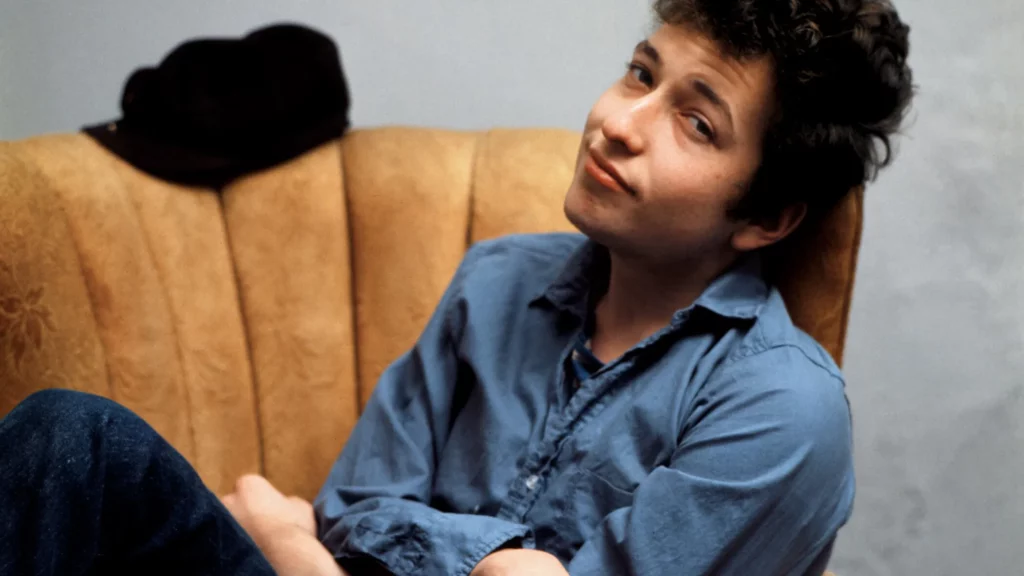
Music nerds love ranked lists. Music nerds love thoughtful commentary. Music nerds love carefully curated playlists. Catalog Crawl provides all of these things and more. In these features, Strange Currencies takes an exhaustive look at the discographies of our favorite artists — the ones who reside at the core of our music obsession.
From wide-eyed Woody Guthrie acolyte to Nobel Prize recipient, Bob Dylan has embodied every conceivable archetype — and several inconceivable ones — over the course of a highly-public career that now spans parts of seven decades. Throughout every unexpected twist and turn, Dylan has not only remained a master songwriter — really, the best to ever do it — but a compelling album artist as well.
And, as anybody even remotely familiar with Dylan’s career knows, compelling has not always translated to great. It’s a well-worn cliché that even bad Bob Dylan albums house at least one worthwhile song, and there are two important truths revealed in that adage: first, Dylan is always capable of crafting a remarkable song; and second, there are several sub-par Dylan records. But those worthwhile songs mean that Dylan never quite bottomed out in the same was as say, The Beach Boys — who we covered in our most-recent Catalog Crawl — even if there is something approaching consensus as to which albums are his worst.
Instead, the real clustering in this list is found at the top. Few will likely find any of the records in our top five to be all that surprising, and for good reason: Dylan’s top handful of records are universally-praised masterworks, each of which stand among the finest albums ever crafted by a pop-adjacent artist. Therefore, the most interesting debates about Dylan tend to happen in the fascinating middle ground of his discography. There are fan favorites to be found in virtually every era of his career, and — as some of us Strange Currencies staff have noted — the Dylan album that resonates most for you at twenty-two may not be the one that resonates most at forty-four.
So here, I present a highly-subjective and non-authoritative ranking of Bob Dylan’s forty studio albums. I’ve foregone including live records or entries in the ongoing and always-excellent Bootleg Series — though the latter will probably get their own Crawl at some point. Dylanologists can be an argumentative and passionate bunch, so I expect (and welcome) your critiques of my work in the comments; and know that these rankings are subject to change based on the year — or even the season, for that matter.
As for the requisite playlist, I’m avoiding tracks that I feel are too well-known by the general public, and/or specifically ones that appeared on the compilations that I grew up with: Bob Dylan’s Greatest Hits (1967), Greatest Hits Vol. II (1971), and Greatest Hits Volume 3 (1994). For the post-Volume 3 albums, I’m generally skipping the song that I perceive to be each record’s best-known track. You’ll find a link to the playlist at the bottom of the list. Enjoy!
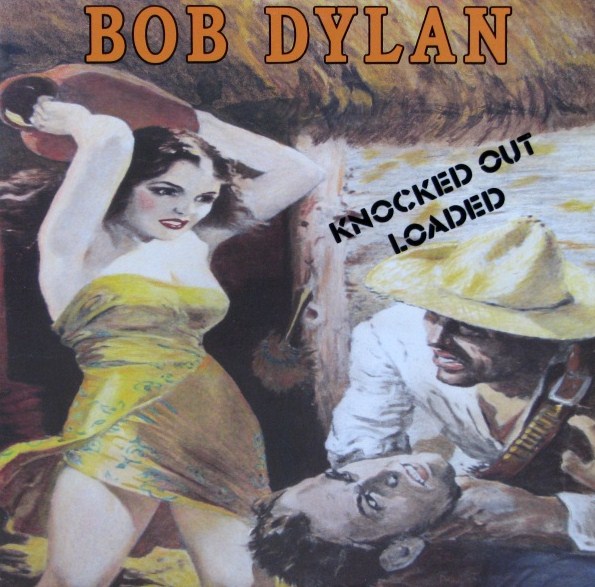
Knocked Out Loaded
1986
(4.5)
40
While it’s completely fair to call 1986’s Knocked Out Loaded the low point of Bob Dylan’s catalog, it really is a tale of two very different sides.
Dominated by the epic “Brownsville Girl” — which isn’t exactly the classic that some portray it as, and which certainly doesn’t justify its eleven-minute run-time — the album’s second half is actually pretty serviceable. The three songs found there are generally much better than those on Dylan’s previous (Empire Burlesque) and subsequent (Down in the Groove) records.
But that first half is an unmitigated disaster. And nowhere is it worse than on “They Killed Him”: my pick for the absolute worst song in Dylan’s discography.
One for the playlist: The upbeat shuffle of “Got My Mind Made Up” defines one of those ‘pretty decent’ Side B tracks. Co-written with Tom Petty — whose tremolo guitar work is a nice touch — it’s not only one of the better songs from Dylan’s worst album, but it’s the shortest one as well. I figure the less of this album I subject you to, the better.
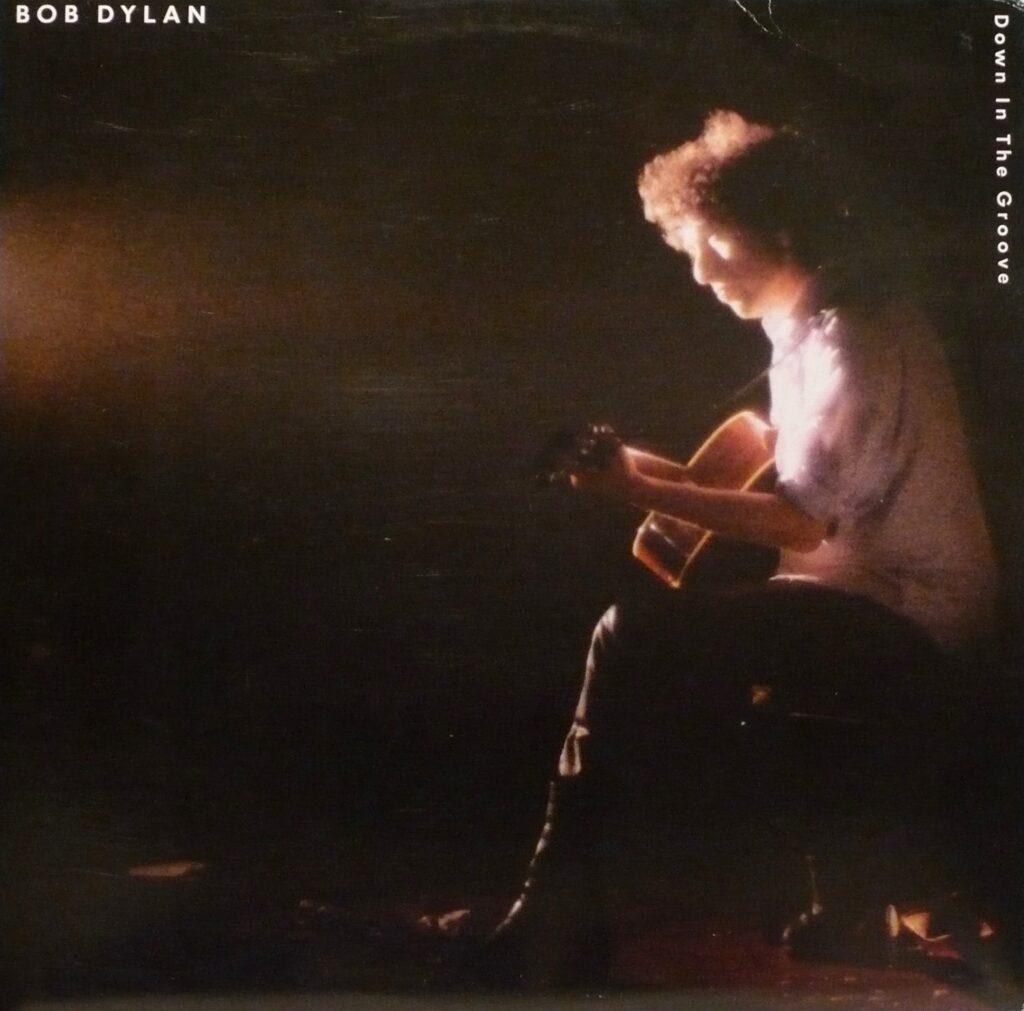
Down in the Groove
1988
(5.0)
39
1988’s Down in the Groove had one of the most difficult gestations of any Bob Dylan record — as evidenced by its stop-start recording sessions, inconsistent personnel, and surprising lack of original material. And, unfortunately, the result of all that struggle was one of the most lackluster albums in Dylan’s discography.
The last entry in a three-album arc that stands as Dylan’s nadir, Down in the Groove mostly suffers from a lack of commitment. There’s virtually no sense of urgency to these tracks; and while his early-eighties records were hardly well-received, there was at least purpose and passion behind them. Throughout most of Down in the Groove, Dylan just sounds disengaged. And — given the dizzying peaks of his career — that is perhaps the greatest sin of all.
One for the playlist: While it tends to get some bonus points for Nick Cave’s Murder Ballads cover, “Death Is Not the End” is genuinely one of the best songs on Down in the Groove. Its only real competition is “Silvio,” but since that one has already appeared on a few Dylan compilations, we’ll skip it here.
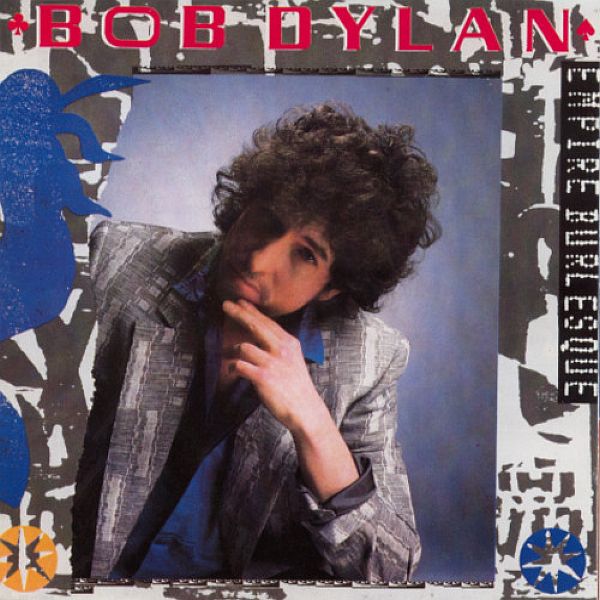
Empire Burlesque
1985
(5.2)
38
Citing “production” as the problem with records can be a bit of a cop out, but there are plenty of times when it’s a reasonable critique. Specifically, it’s the garish arrangements of 1985’s Empire Burlesque that make it such a chore, and a genuine contender for Bob Dylan’s worst record.
Recorded and released smack dab in the middle of the superficial eighties, Empire Burlesque is often referred to as an album of good songs brought down by overproduction. The truth is, it’s a bit hard to even hear the songs hiding behind the wall of synths, hair guitar riffage, and excessive backing vocals. Sure, there are moments where a lyrical couplet lands, but they’re quickly overwhelmed by all of the excessive ornamentation.
And yet, Empire Burlesque has its defenders; I can’t have been the only one drawn in by the 4 1/2 star review on AllMusic. I’ve been trying with this one for over fifteen years — and I’ll keep doing so — but damn, is it ever a slog.
One for the playlist: Unsurprisingly, the best song on Empire Burlesque is the only one left unaffected by the album’s gaudy production. Specifically written to close out the album on a “simpler” note, “Dark Eyes” is a much welcome return to the acoustic folk sound of Dylan’s earliest records. If I really wanted to accurately represent Empire Burlesque, I’d probably pick something like “When the Night Comes Falling From the Sky” — which I actually don’t hate as much as most of the other songs — but “Dark Eyes” is easily the best thing here.

Saved
1980
(5.7)
37
First, the good. There are actually a couple of songs on Saved — the second entry in Bob Dylan’s trio of religious-themed albums — that genuinely kick ass. While the lyrical fire and brimstone is more associated with 1979’s Slow Train Coming, tracks like “Solid Rock” and “Saved” bring plenty of musical heat. There’s also a reasonably impressive grandiosity to second-half tracks like “Pressing On” and “In the Garden.”
Okay, now for the bad. Despite Dylan’s sincerity here, these are easily the most trite lyrics that he had ever penned up to this point. Sure, in the spirit of gospel music, they’re direct, simple, and repetitive; but still, it’s tough to hear pop music’s greatest wordsmith reduced to little more than platitudes. Then, there’s the unavoidable truth that Dylan’s vocals on some of these tracks are just plain bad. I never like to give much credence to the “Dylan is a bad singer” argument — it’s lazy, tired, and quite frankly, ill-informed — but, as just one example, “What Can I Do for You?” is simply not good.
Lastly — and perhaps most importantly — there’s that album cover. Just inexcusable, Bob.
One for the playlist: I had never taken much notice of it until watching the rather unorthodox (but kind of fascinating) Dylan biopic, I’m Not There, but “Pressing On” is a genuinely affecting track. I don’t share Dylan’s convictions on these Christian-themed albums, but I do appreciate when I can actually feel them.
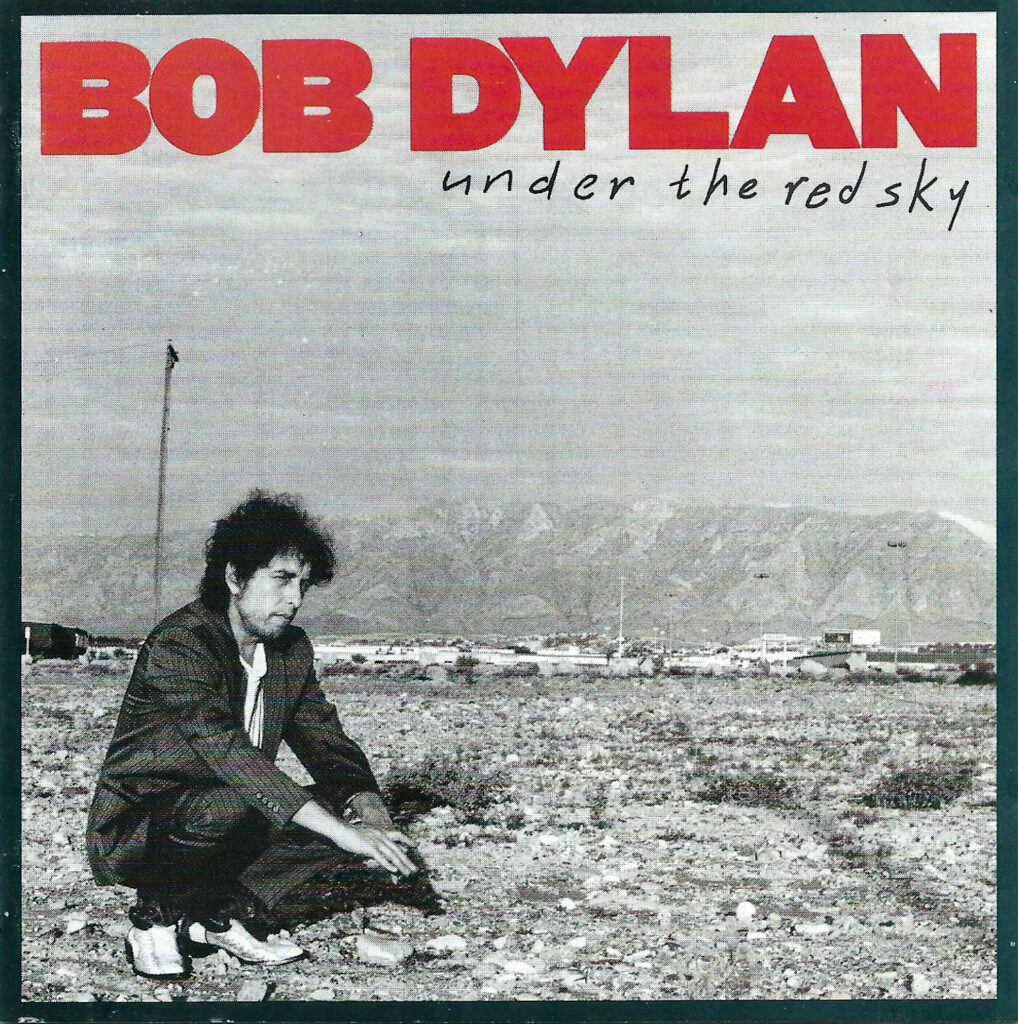
Under the Red Sky
1990
(5.8)
36
While I don’t think 1990’s Under the Red Sky is as bad as most folks make it out to be, it’s still not particularly good. Losing all of the momentum — not to mention the critical goodwill — built up by the previous year’s excellent Oh Mercy, Red Sky landed like a thud.
Much of the criticism of this one has to do with the often insipid lyrics. Several tracks sound like they were based on nursery rhymes — which is kinda cute, since the album appears to have been dedicated to his young daughter — but I suppose children’s songs were one place where Dylan couldn’t outpace his hero, Woody Guthrie.
And if Dylan — like Guthrie — had gone all in with making an actual children’s album, it might’ve worked out better. What we get instead is an awkward record that seems destined to please no one.
One for the playlist: I could just troll you all by picking “Wiggle Wiggle,” but I’ll refrain. Dylan was still playing “God Knows” when I saw him live for the first — and only to date — time in 2005. It’s not a bad song, and for Under the Red Sky, “not bad” makes it a highlight.

Dylan
1973
(6.0)
35
A notorious entry in Bob Dylan’s catalog, Dylan was released in an underhanded manner by Columbia after he briefly moved to Asylum Records. The thing is, even though it was released without Dylan’s consent, contains only covers, and — to the best of my knowledge — never even appeared on CD in the United States, Dylan isn’t the outright disaster that it’s often portrayed as.
Granted, despite having its share of decent moments, this would remain Bob Dylan’s least essential release until his eighties nadir.
One for the playlist: Despite its kinda gaudy backing vocals, the opening “Lily of the West” begins Dylan on its strongest note. It’s no masterwork, mind you; but the bar is set relatively low on this one, and “Lily” clears it with ease.
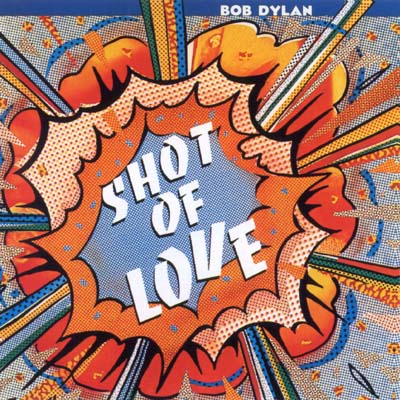
Shot of Love
1981
(6.1)
34
While the overtly religious themes of Slow Train Coming and Saved had been toned down a bit, 1981’s Shot of Love is still definitively part of Bob Dylan’s trilogy of Christian albums. And, in terms of quality, it fits firmly in the middle of the three.
If you were left cold by Dylan’s previous two records, Shot of Love was unlikely to change your mind. Still, there’s a variety of tone here that arguably spans a wider stylistic range. That, along with the deemphasis on spirituality, and a legitimately classic closing song, may make Shot of Love the easiest entry point into Dylan’s most divisive era.
One for the playlist: Even though it’s widely-regarded as the best song from his “born again” era, “Every Grain of Sand” was not included on any of the qualifying greatest hits compilations. It’s a masterful and affecting song that closes out a rocky few years of Dylan’s career on its highest note.
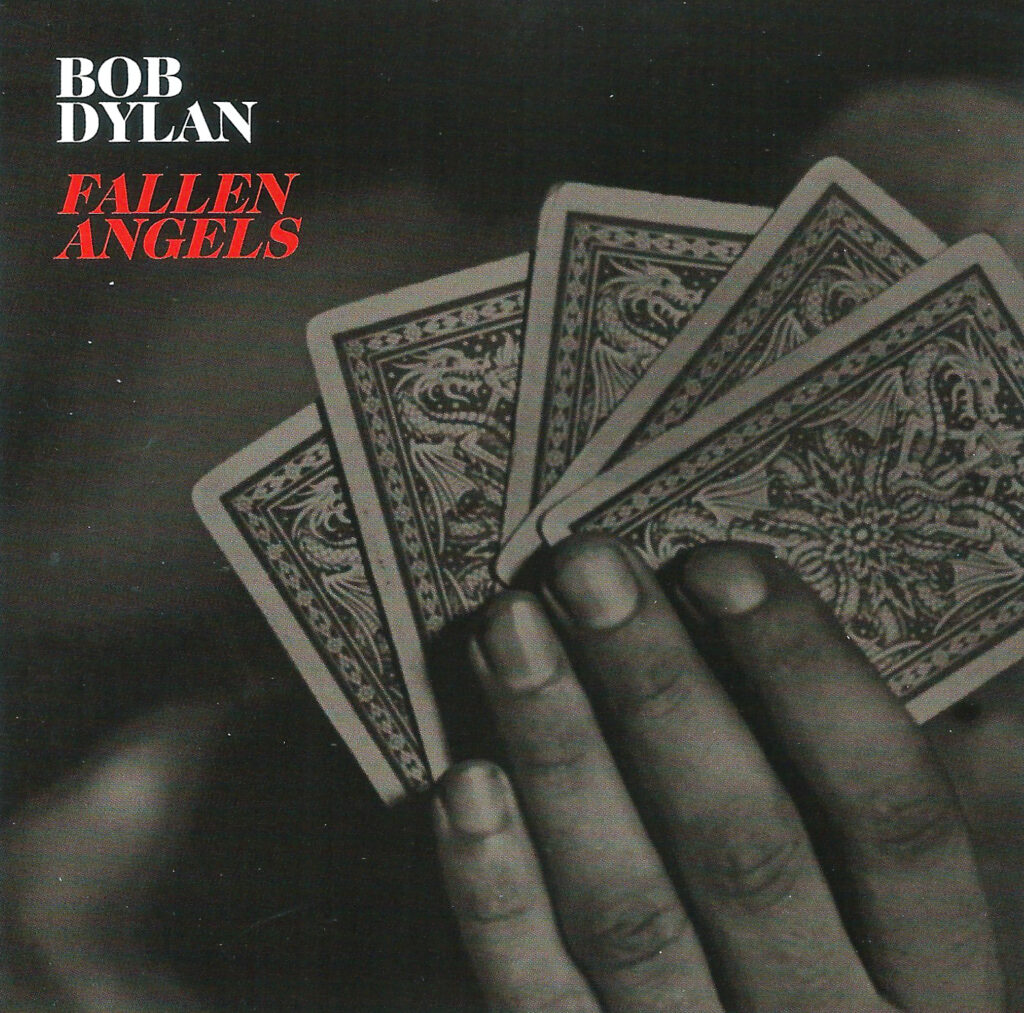
Fallen Angels
2016
(6.3)
33
Bob Dylan spent the second half of the 2010s as a crooner, recording three albums (one a triple-LP) worth of tracks from the Great American Songbook — specifically focusing on songs associated with Frank Sinatra. Comprised of recordings from the sessions that produced 2015’s Shadows in the Night, but that hadn’t made the cut, Fallen Angels is the least-essential of these three albums.
But least-essential does not mean bad. Not by any stretch. These are all great songs, and Dylan’s aged voice lends them an air of hard-earned authority and authenticity. The charms of these “standards” records are slow burning, but all of them are worthwhile.
One for the playlist: The extended instrumental intro to “Melancholy Mood” does an excellent job of showcasing the nuance and grace that Dylan’s band brought to the table during these standards sessions. Like most of what’s here, it’s a minor track, but it’s a plenty enjoyable one.
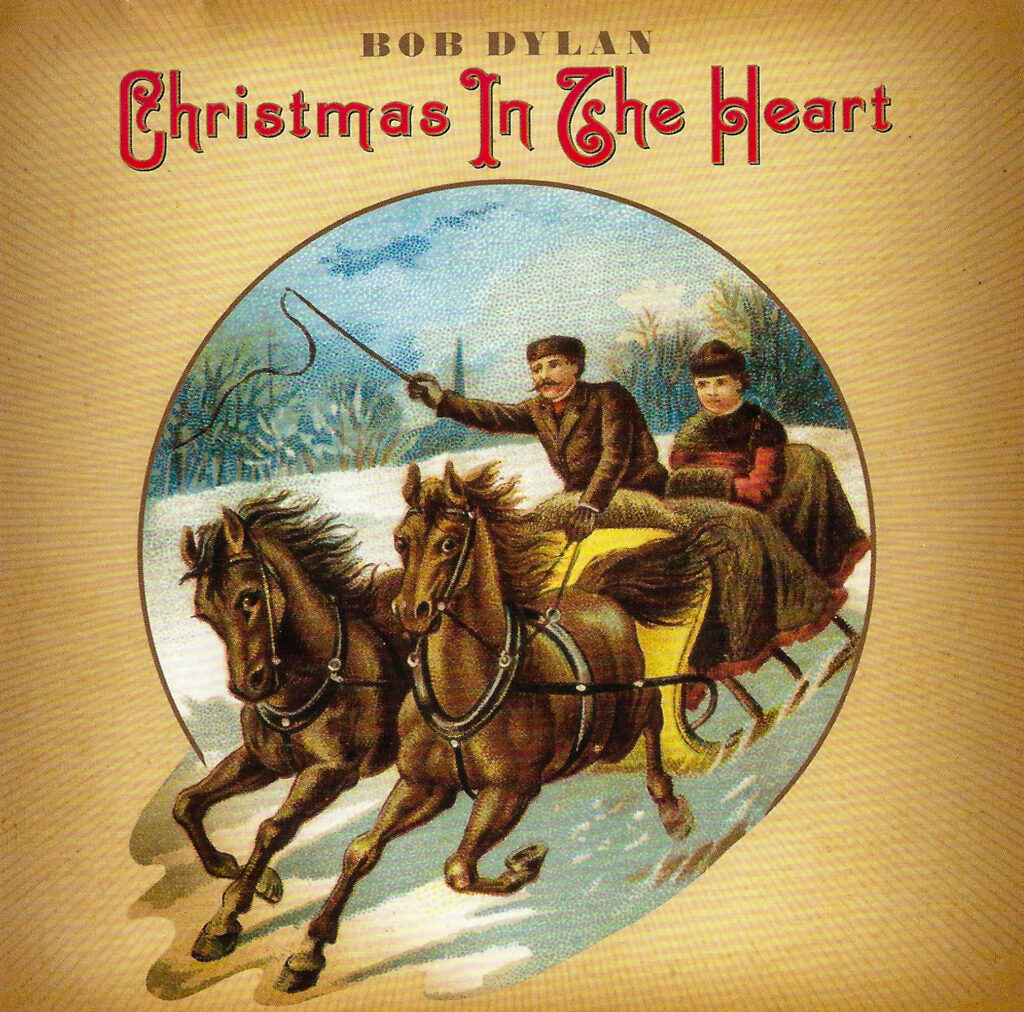
Christmas in the Heart
2009
(6.4)
32
A Christmas album from a legendary figure shouldn’t be above criticism, but it does kinda feel weird including Christmas in the Heart on this list. In fact, the very idea of this album — the royalties of which went to charity — is a little weird.
However, with it being a part of my family’s holiday music rotation for the past fifteen years, Christmas in the Heart has become something of a nostalgic favorite. It’s not essential by any means, but there’s no harm in dusting it off once a year. Besides, these gruff vocals provide a nice counterpoint to the smooth Sinatra and Ella Fitzgerald records that are also part of that rotation.
One for the playlist: Personally, I have a hard time listening to Christmas music outside of the holiday season, so we’ll skip this one. But, if I were going to pick one, it would definitely the weirdo-polka highlight “Must Be Santa.”

Triplicate
2017
(6.5)
31
The last of Bob Dylan’s 2010s forays into the Great American Songbook, Triplicate spreads thirty songs over three separately-titled discs. But while its ninety minute run-time may seem imposing, Triplicate is both generous and consistently enjoyable.
Probably best enjoyed one disc at a time, Triplicate — like its sister releases — establishes its atmosphere early and thoroughly. Chances are you already know several of these songs, but Dylan and his touring band recast them as their own lived-in mood pieces.
One for the playlist: Sure, the mood of “I Could Have Told You” is meant to be melancholy, but the vibe that’s conjured here is so irresistibly cozy that it’s almost easy to overlook the downbeat lyrical content.
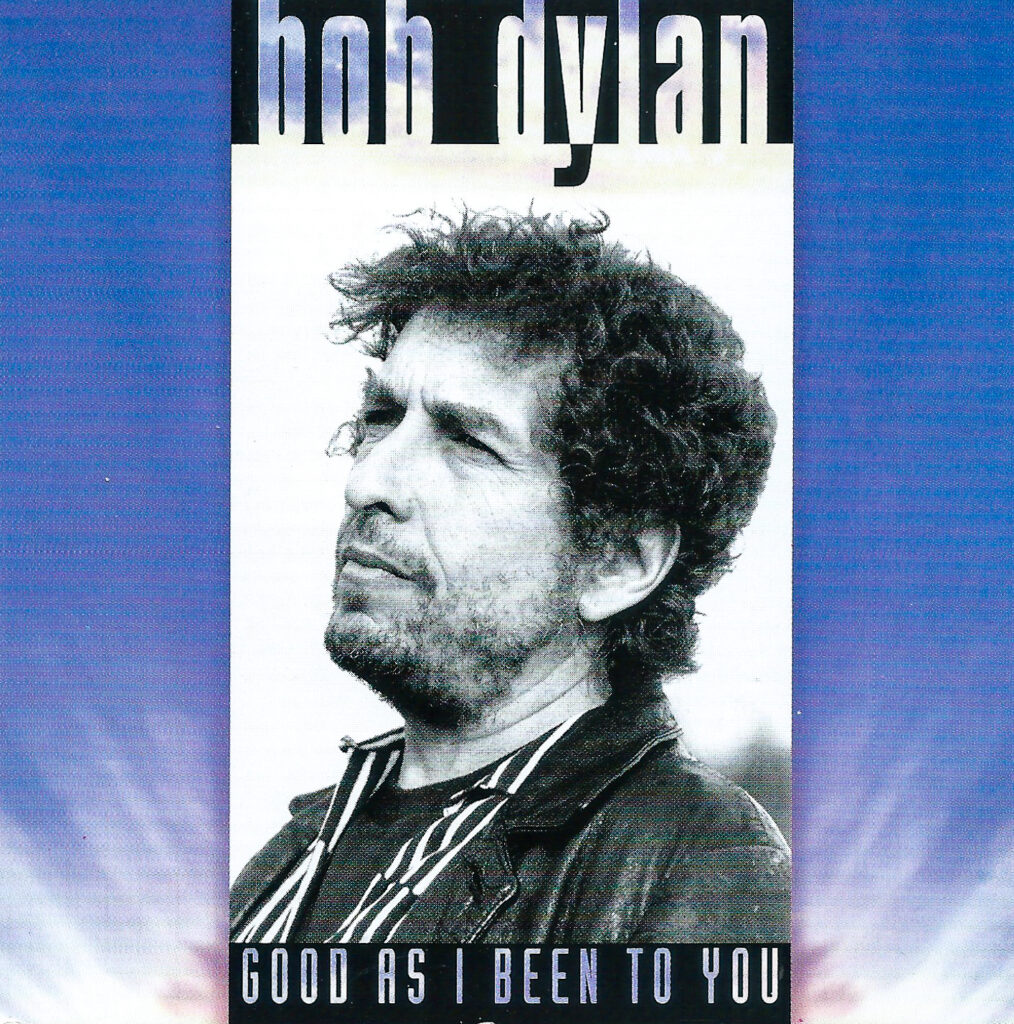
Good as I Been to You
1992
(6.6)
30
The first of two traditional folk albums that Bob Dylan recorded in the early-nineties, Good as I Been to You served as a palette cleanser following the disappointing Under the Red Sky.
While it’s a deliberately minor affair — it’s just Bob, his acoustic guitar, and occasional harmonica — there’s a low-key charm to this baker’s dozen of dusty old numbers. Besides, it was Dylan’s first pure folk record in nearly thirty years, and that counts for something — even if it didn’t feature any original songs.
One for the playlist: A traditional Australian ballad about a convict being sent to the penal colony of Botany Bay, “Jim Jones” features some of the best vocals on Good as I Been to You. Though Dylan’s voice is noticeably ragged, it lends a deeper sense of vulnerability to the song’s mournful melody.
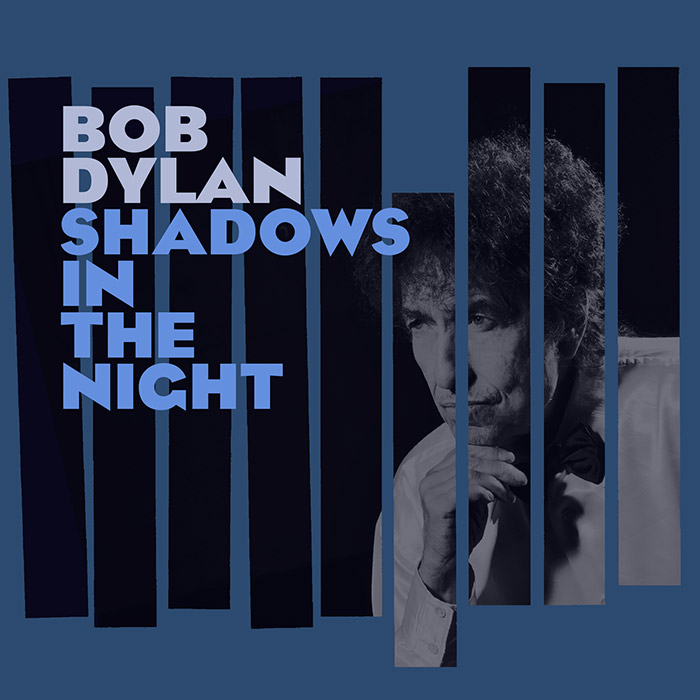
Shadows in the Night
2015
(6.7)
29
While there’s an impressive consistency maintained across all five discs of Dylan’s standards era, it’s the initial release, 2015’s Shadows in the Night, that creates the most enveloping atmosphere. From the Blue Note nod of the album cover, to the song selection, to the nighttime vibes of the instrumental arrangements, Shadows is an immersive listening experience.
And while many casual observers balked at the idea of Dylan’s notoriously divisive voice taking on a set of Sinatra songs, his performances here are consistently excellent. It was on these records that Dylan truly reengaged as a singer, perhaps more so than at any point in decades. It would yield great results on his next album of original material — and in his subsequent tours — but the process revealed here is plenty rewarding to witness.
One for the playlist: Dylan knew exactly what he was doing by opening this three-album arc with “I’m a Fool to Want You.” Not only does it help to set the nocturnal mood of the entire project, but it harkens back to Billie Holiday’s Lady in Satin — where it was also the opener — and serves as a reminder that the ‘prettiest’ voices are not necessarily the ones that wrest the most emotion and pathos from the Great American Songbook.
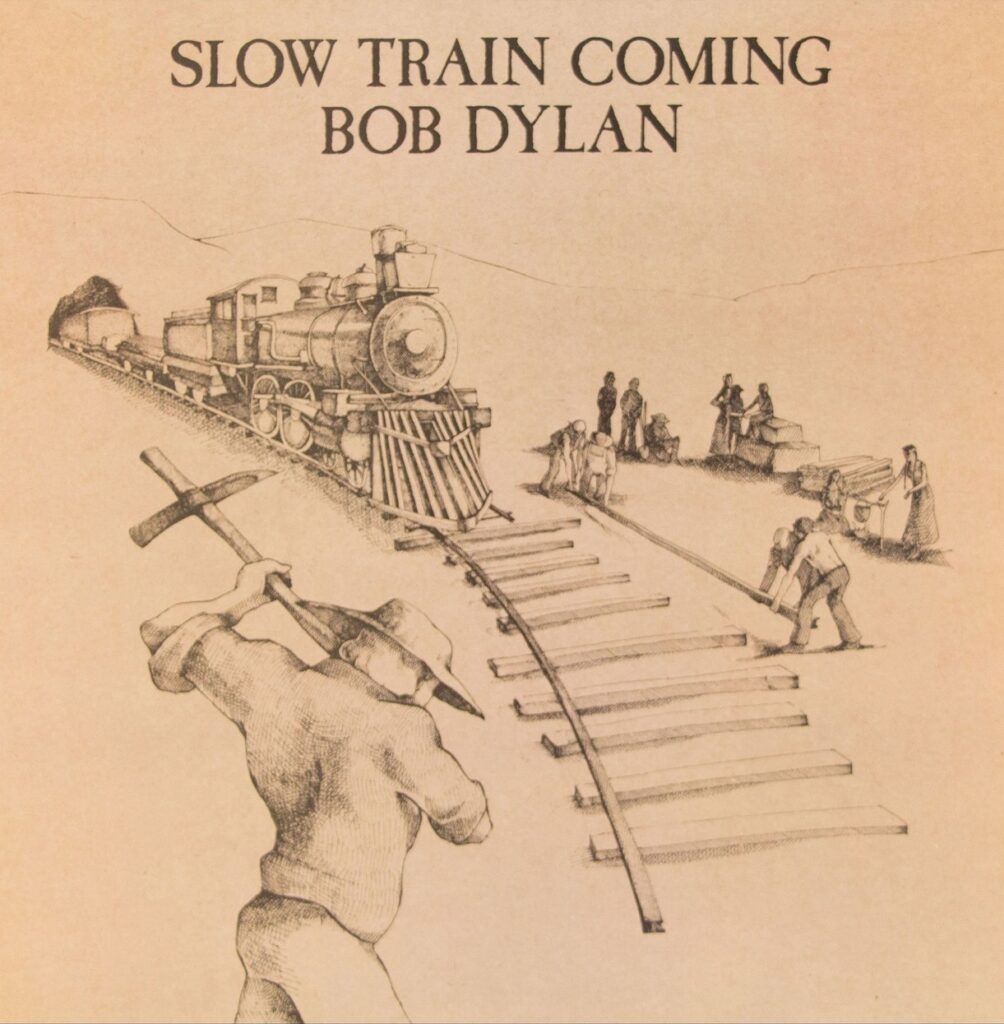
Slow Train Coming
1979
(6.8)
28
The first album in Bob Dylan’s “born again trilogy” is also the best by a considerable margin. Released in 1979, Slow Train Coming ignited intense reactions across the spectrum, and it remains one of the most divisive records in his discography.
The real strength of Slow Train Coming is found in the instrumental work. Recorded at the legendary Muscle Shoals studio, there’s an undeniable groove to most of these songs. The fluid bass, excellent keyboard work, signature Muscle Shoals horns, and guitar of Mark Knopfler all make for a record with considerable musical merit.
But the lyrics are likely to make or break this one for most folks. Even aside from the heavy-handed proselytizing, this isn’t exactly the most inspired work of Dylan’s career. I mean, I guess he was inspired, but it doesn’t exactly translate to the listener.
One for the playlist: Perhaps it’s because it has the least overtly-religious lyrics on the album — although there are still several clunkers — the standout for me is “Slow Train.” In fact, if one squints just right, you can find more than a few connections between the righteous fury displayed here, and the fiery protest songs on which Dylan had made his name.
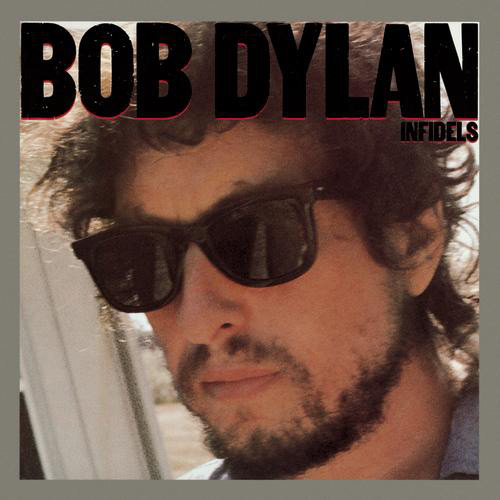
Infidels
1983
(7.0)
27
Opinions on Bob Dylan’s first post-Christian era album run the gamut from loved to hated. Personally, I’ve always wanted to like Infidels more than I do, but despite the heavy lifting done by Mark Knopfler’s production and guitar work — in fact, the whole band is excellent — these songs are often weighed down by Dylan’s awkward political/social stances.
In reality, Infidels’ generally-positive reputation probably has a lot to do with its placement in Dylan’s catalog. Arriving after the divisive born again trilogy, it was, for most, a welcome return to (mostly) secular material. And despite its shortcomings, Infidels is clearly miles ahead of the three records that would follow in its wake.
So, as a decent respite between the two roughest patches of Dylan’s career — and given the fact that its sessions produced a pair of legitimate gems in “Jokerman” and the much-loved outtake “Blind Willie McTell” — Infidels gets a pass.
One for the playlist: The aforementioned “Jokerman” is the clear highlight here, but it has appeared on too many Dylan compilations to truly be considered a deep cut. After that, the closing “Don’t Fall Apart on Me Tonight” is, in my estimation, the next best track on Infidels.
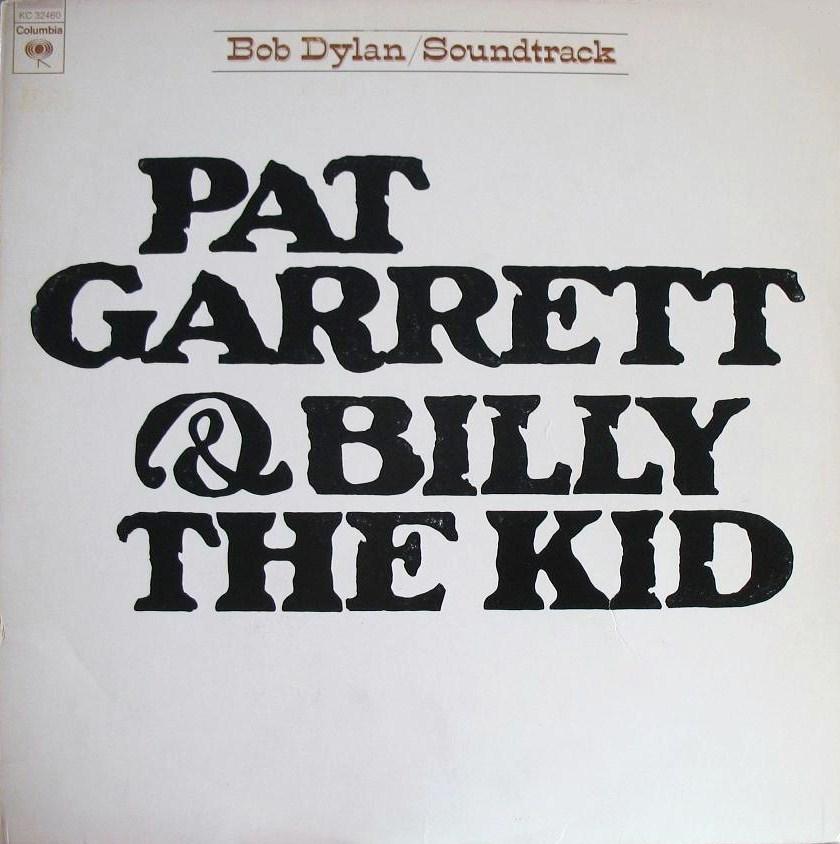
Pat Garrett & Billy the Kid
1973
(7.1)
26
The soundtrack to Sam Peckinpah’s 1973 film Pat Garrett and Billy the Kid — in which Dylan also starred — may not be an essential Bob Dylan release, but it’s a charmingly low-key listen.
Of course, for a good while, it was the only place where one could find one of Dylan’s most iconic tracks, “Knocking’ on Heaven’s Door.” While the surrounding material is nowhere near as ‘major’ — in fact, most of it is instrumental — it still provides plenty of value for Dylan fans.
One for the playlist: Of the three “Billy” tracks that move throughout the plot of the film, it’s “Billy 1” that stands out as the best. However, one is left wondering what exactly happened to “Billys” 2, 3, 5, and 6.
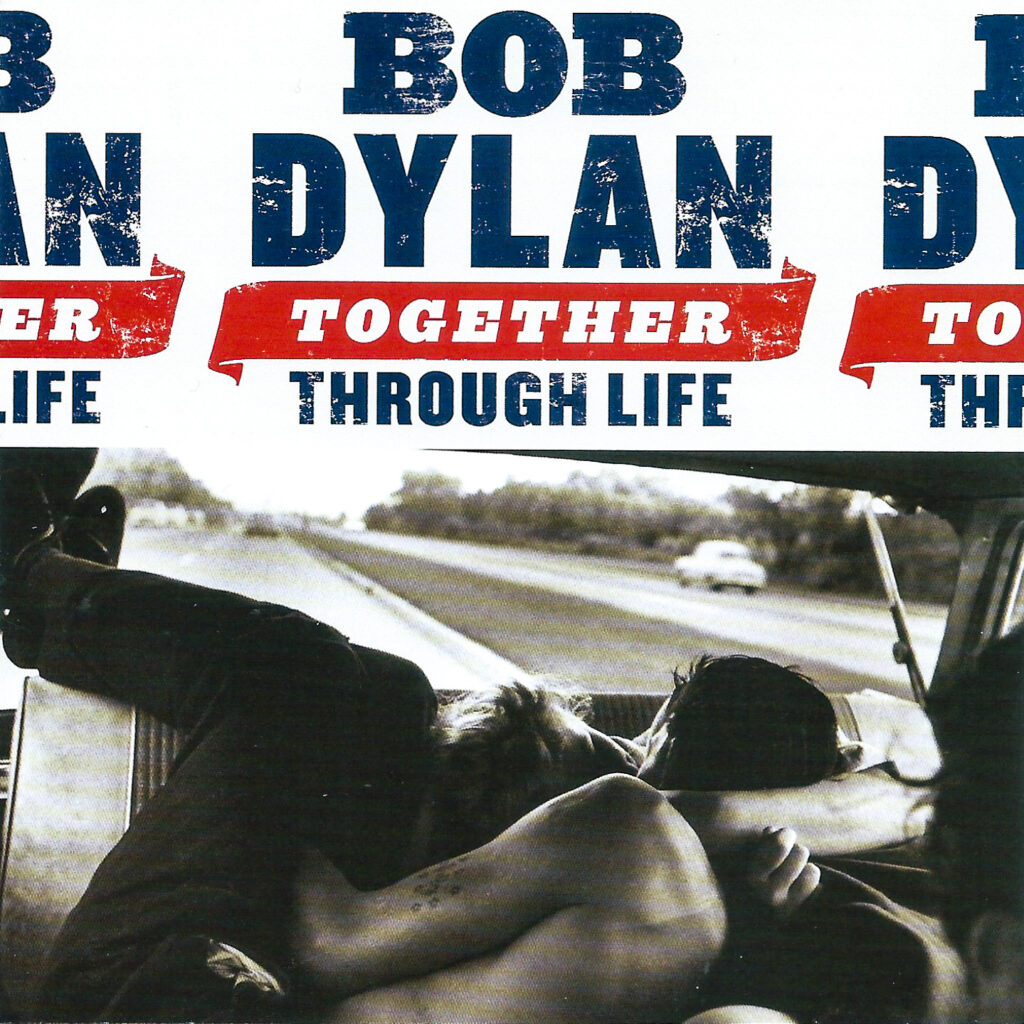
Together Through Life
2009
(7.2)
25
While it was well-received upon its 2009 arrival, Together Through Life hasn’t quite retained the power of Bob Dylan’s other 21st century albums. But even as a comparative rut in Dylan’s recent history, there’s still plenty to appreciate on this one.
Namely, Together Through Life trades the pre-war eclecticism of Love and Theft and Modern Times for a rough-hewn border blues sound. Much of this has to do with the work of Los Lobos’ David Hidalgo — a noticeable presence throughout — who guests on both guitar and accordion. While Dylan himself often sounds like he’s going through the motions here, he continues to pull spirited performances from his collaborators during this late-career revival.
One for the playlist: Lead single “Beyond Here Lies Nothin'” is the highlight here, but aside from that, it’s arguably the mid-album “This Dream of You” which best displays the Tex-Mex elements that Hidalgo brings to the table. It’s a minor track, but a plenty evocative one.
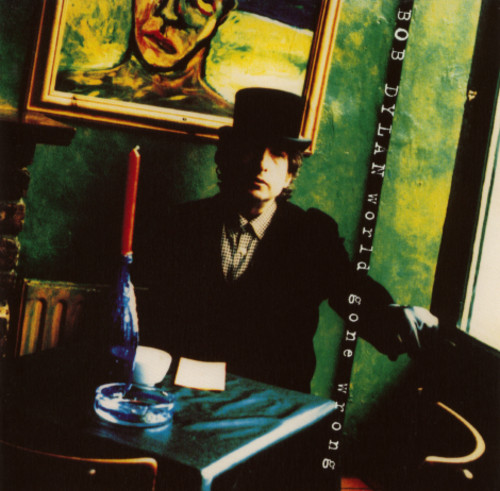
World Gone Wrong
1993
(7.2)
24
The second of Bob Dylan’s nineties folk albums, World Gone Wrong follows in the same mold as 1992’s Good as I Been to You, as it features just Dylan’s voice, guitar, and harmonica — and was recorded entirely in his home studio in a quick, no-frills fashion. Where World Gone Wrong sets itself apart from its predecessor is in song selection.
The material here is generally darker than that which appeared on Good as I Been to You, and the more mournful quality of these songs proves to be a better fit for Dylan’s noticeably aged voice. He lends a gravity to these ten tracks, not unlike that found on Johnny Cash’s American Recordings — the first volume of which would arrive six months after World Gone Wrong.
One for the playlist: Dylan’s take on the traditional “Delia” is the best single recording from his nineties-era folk revisitation. In particular, it’s the recurring refrain — “All the friends I ever had are gone” — that makes it a particularly haunting track.
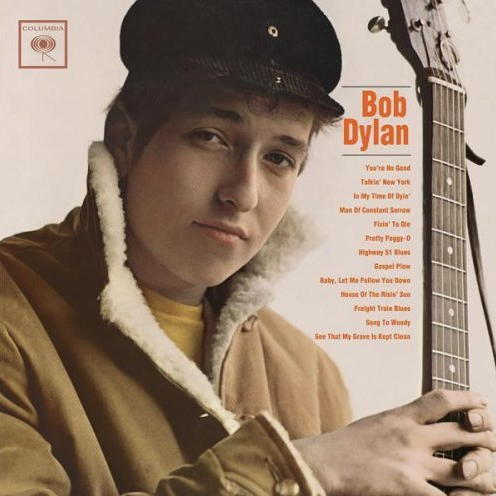
Bob Dylan
1962
(7.3)
23
It’s mildly disorienting to hear the greatest songwriter of all-time debut with a record comprised mostly of covers and traditional folk songs, but then again, Bob Dylan’s never been all that easy to pin down. Perhaps people on the New York scene thought they had him figured out here: a naive kid from the midwest, displaying some talent, sure; but nothing here screams wunderkind, let alone “voice of a generation.”
But that’s how we’re left to view this 1962 record today: through the lens of a career for which the word ‘titanic’ still seems to sell it short. And it wouldn’t be long before Dylan flipped the script either. After all, his next album would arrive a mere fourteen months later; and its comparative quality suggests that some sort of nefarious crossroads bargain had gone down in the interim.
But whether viewed on its own or as a prelude, it’s hard to come to the conclusion that Bob Dylan is anything more than pleasant-but-minor. In 1962, other folkies on the New York scene were doing this bit just as well, if not better. At this moment, Dylan was just one of the pack.
One for the playlist: It’s really only when this kid starts to get sentimental in the tribute to his dying idol — “Song to Woody” — that you start to think there might be something happening here. It’s the first legitimate gem of his recording career.
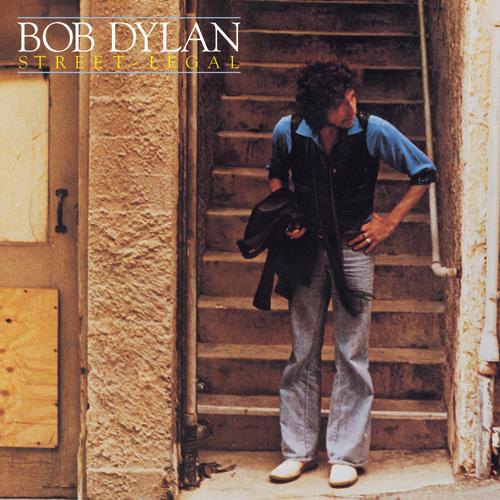
Street Legal
1978
(7.4)
22
While there’s still some of the wild eclecticism of Desire and the concurrent Rolling Thunder Revue tour present on 1978’s Street Legal, the songs are not consistently up to the level of those on either of Bob Dylan’s previous albums. Not even close, in fact.
Granted, there’s still some good stuff here; but a lot of it is compromised by divisive arrangements, dominated by saxophone and gospel-inspired backing vocals. When the material is strong — as it is on the excellent opener “Changing of the Guards” — those arrangements can be forgiven. But on the weaker songs — many of which drift too far into the vague sentimentalities generally associated with far lesser songwriters — Street Legal comes off as a rather ho-hum, transitional affair.
One for the playlist: There’s an almost cinematic quality to album centerpiece “Señor (Tales of Yankee Power).” It’s one of the instances where the wider sonic palette of Street Legal truly pays off. As an aside, Calexico turned in a fine version — with Willie Nelson on vocals — for the soundtrack to I’m Not There.
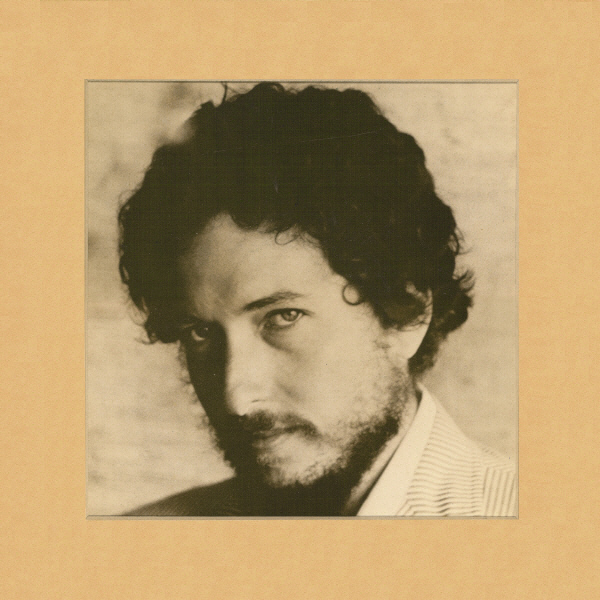
New Morning
1970
(7.6)
21
The good-natured vibe of Bob Dylan’s wilderness era continues on 1970’s New Morning: an album hailed by many as a return to form, after the critical failure of Self Portrait.
Now, I wasn’t around in 1970, but to my ears, the “tossed off” and sprawling nature of Self Portrait actually works better than the more focused, compact New Morning. As soon as I type ‘focused’ though, I’m reminded that there are three or four tracks on this one that are every bit as ‘meh’ as the most underwhelming material on Self Portrait — particularly the spoken-word, scat jazz of “If Dogs Run Free.”
Still, there are enough minor gems here to make New Morning a worthwhile listen, and given its generally-positive vibes, I wouldn’t begrudge anyone who considers it a favorite.
One for the playlist: Even aside from its connection to The Big Lebowski, “The Man in Me” feels like the real standout track here. Besides, the album’s other best-known song, “If Not For You,” can be heard in a far superior form — with George Harrison on slide guitar — in the first installment of The Bootleg Series.
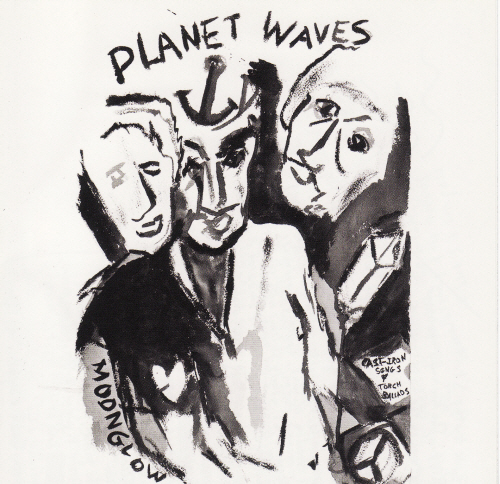
Planet Waves
1974
(7.7)
20
Finding Dylan reuniting with the members of The Band, Planet Waves — his lone studio release for Asylum — was hailed as a return to form upon its arrival. And while it would quickly be overshadowed by its monumental follow-up, Planet Waves largely holds up today.
Though there are similarities between Planet Waves and New Morning, this album is clearly the product of a more tumultuous period in Dylan’s life — themes that would be explored more deeply on the aforementioned follow-up. And in its most emotionally resonant moments — “Wedding Song,” “Going, Going, Gone,” “Dirge,” and two different versions of “Forever Young” — Planet Waves seems to usher in Dylan’s true artistic comeback.
One for the playlist: One of the darker moments on Planet Waves, “Going, Going, Gone” strikes a fine balance between Dylan’s stripped-back singer-songwriter mode, and the contributions from The Band. In particular, Garth Hudson’s high and lonesome organ and Robbie Robertson’s jagged guitar punctuations help to establish a moody atmosphere.
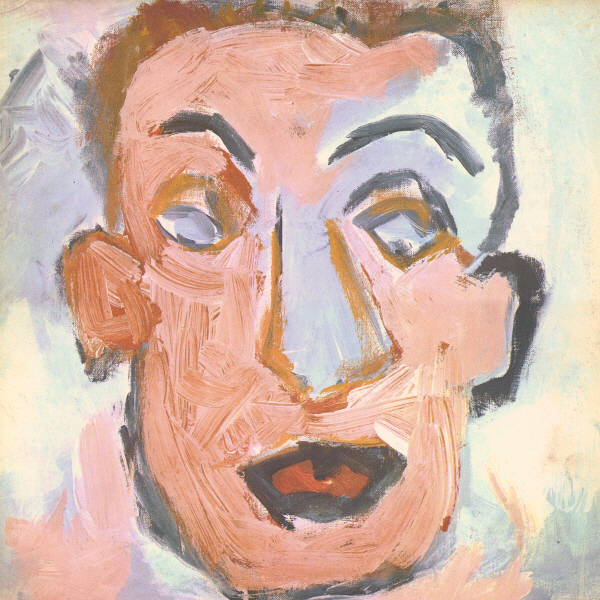
Self Portrait
1970
(7.9)
19
In a recent conversation with one of my colleagues for this site, I had to admit not only my long-held fascination with ‘bad albums,’ but an actual affinity for them. It’s the old train wreck phenomenon; I simply can’t look away from an awful record, especially when it was made by a legitimately great band or artist. But, as something of a journeyman in this particular field, I must inform you that Self Portrait is not a bad album. In fact, it’s not even close to one.
Yeah, the double-LP that legendary critic Greil Marcus famously opened a review for by stating, “What is this shit?,” is actually pretty damn good. The problem is that, in 1970, it was an album that nobody — aside from Dylan himself — wanted Bob Dylan to make. It was messy, sprawling, apolitical, aggressively traditional, and featured a surprising shortage of original material.
But all these years later, Self Portrait is a treasure trove of good-natured pop folk, much in the vein of the previous year’s Nashville Skyline, but with a genuine sense of irreverence thrown in for good measure. For decades, fans and critics have suggested that Self Portrait was nothing but a seventy-three minute piss take; offering up the argument that this act of self-sabotage could be confirmed by listening to the ‘superior’ material found on the Bootleg Series’ Another Self Portrait. But who, other than Dylan himself, really knows all of the intent behind Self Portrait?
I won’t claim to have the answer. I’m just a guy who likes the occasional bad album. But this isn’t one of those. I promise.
One for the playlist: It was actually Frank Black and The Catholics’ cover of “Belle Isle” that initially prompted me to purchase Self Portrait. And that — aside from the fact that it’s still one of my favorite tracks on the album — seems like reason enough to make it the pick.
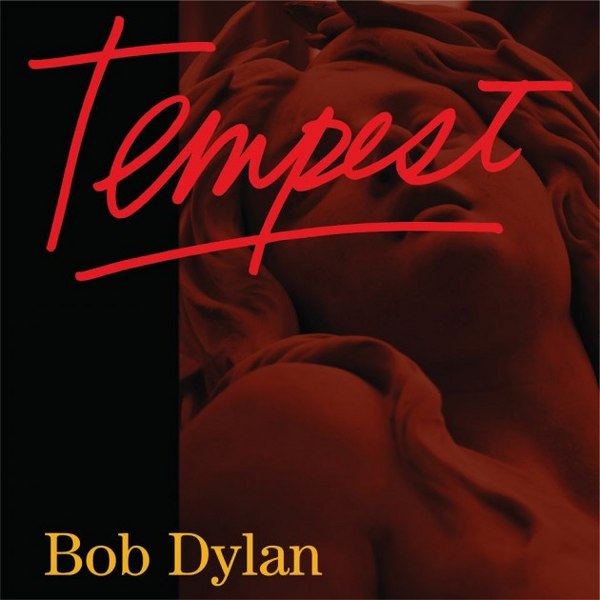
Tempest
2012
(8.0)
18
While far from a dud, 2009’s Together Through Life was the least vital record from Bob Dylan’s renaissance era to date. Its 2012 follow-up, Tempest, was a bit of a course correction, as Dylan gets back to the storytelling prowess that had first brought him widespread attention. Not that Dylan had ever strayed too far from his roots, but Tempest is a full-on embrace of elemental, cinematic folk music. These songs are full of shady characters, twist endings, and — as many critics noted — a surprisingly high death count.
And one’s level of enthusiasm for this album is likely to be tied to their enjoyment of the trio of songs that close out the program: “Tin Angel,” “Tempest,” and “Roll On, John.” These three find Dylan in widescreen storytelling mode: particularly the title track, which documents the story of Titanic — not just the famed ship, but (seemingly) the 1997 blockbuster film that depicted its demise.
One for the playlist: The oft-cited darkness and violence at the heart of Tempest are laid bare in the mid-album highlight “Pay in Blood.” A perfect vehicle for Dylan’s shredded vocals, the track leaves a lasting impression, and is a late-career standout.

Shadow Kingdom
2023
(8.2)
17
For a guy who titled the documentary of his 1965 British tour Don’t Look Back, Bob Dylan has spent a great deal of his recent history in reflective mode. And after tackling both holiday classics and the Great American Songbook, it probably shouldn’t have been all that surprising to find Dylan revisiting the Great Dylan Songbook.
Featuring thirteen reinterpretations of his own classics — with a new original instrumental thrown in for good measure — Shadow Kingdom is a worthwhile endeavor. Famously, Dylan has a long history of reinventing his songs in live performances, and while few of the renditions here could be considered radical, it’s interesting to hear these songs approached from a different angle. In fact, the scaled-down, percussion-less arrangements make for some of the most intimate recordings of Dylan’s post-folk career.
One for the playlist: While my favorite version is still the sparse demo released on 1985’s Biograph collection, the Shadow Kingdom interpretation of “Forever Young” might actually best both of the takes that appeared on Planet Waves. Plus, since I’m arranging the playlist in chronological order, it’ll make for a poignant closing track.
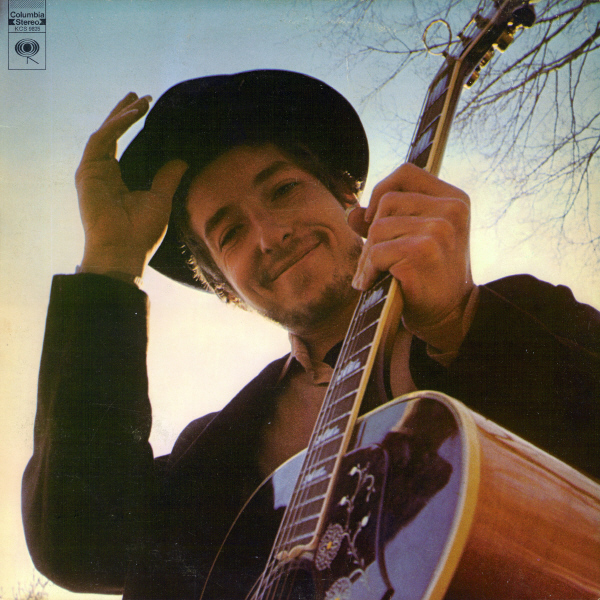
Nashville Skyline
1969
(8.5)
16
Bob Dylan closed out a dizzying decade with what may still be the most easygoing and good-natured record in his catalog. Breezing by in just over twenty-seven minutes, Nashville Skyline is an endearing and endlessly replayable gem.
But it’s also an album that drew a decidedly mixed reaction when it arrived in the spring of 1969. The country affectations undoubtedly helped Dylan appeal to a new audience, but his loyal acolytes — already left confused by 1967’s John Wesley Harding — were troubled by its gleefully apolitical nature and slick sound.
Today however, Nashville Skyline is a wonderfully refreshing highlight of Dylan’s wilderness years.
One for the playlist: I could have sworn that “I Threw It All Away” was on Greatest Hits Volume II, but apparently not. Not only does it feel like one of those songs that more people should be aware of, but I’d also take it over the far-better-known “Lay Lady Lay.”
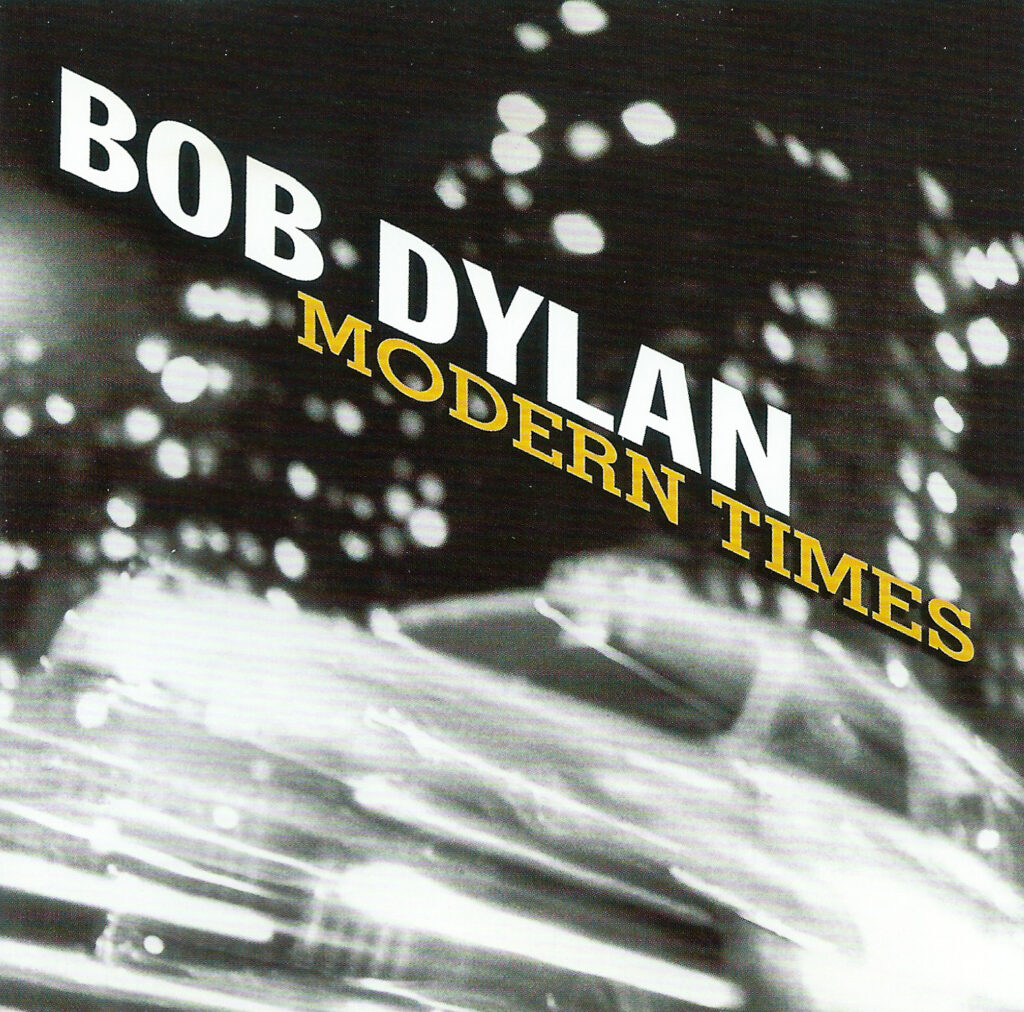
Modern Times
2006
(8.7)
15
Whether viewed as the final act in a “comeback trilogy,” a victory lap, or just another excellent record, Modern Times was further evidence that the Bob Dylan renaissance was for real, as it was met with critical acclaim and commercial success.
Recorded with one of the most consistent band lineups of Dylan’s career, Modern Times has a sense of musical synergy and grace. These songs rarely break a sweat — in fact, a few are almost shockingly minimal — but there’s a richness to them that is quite impressive.
And Dylan himself is in fine form, continuing the winning streak that had begun with 1997’s Time Out of Mind. These ten tracks are littered with dense imagery, sharp humor, and plaintive romanticism — plus a bit of ‘heavy borrowing,’ as some critics pointed out.
One for the playlist: It seems that “When the Deal Goes Down” is probably the best-known track from Modern Times, so I’ll skip that one (though it is lovely). The darkly drawn closer, “Ain’t Talkin'” is another standout — finding Dylan surveying an apocalyptic scene, and serving as a fascinating counterpart to his early masterpiece, “A Hard Rain’s A-Gonna Fall.”
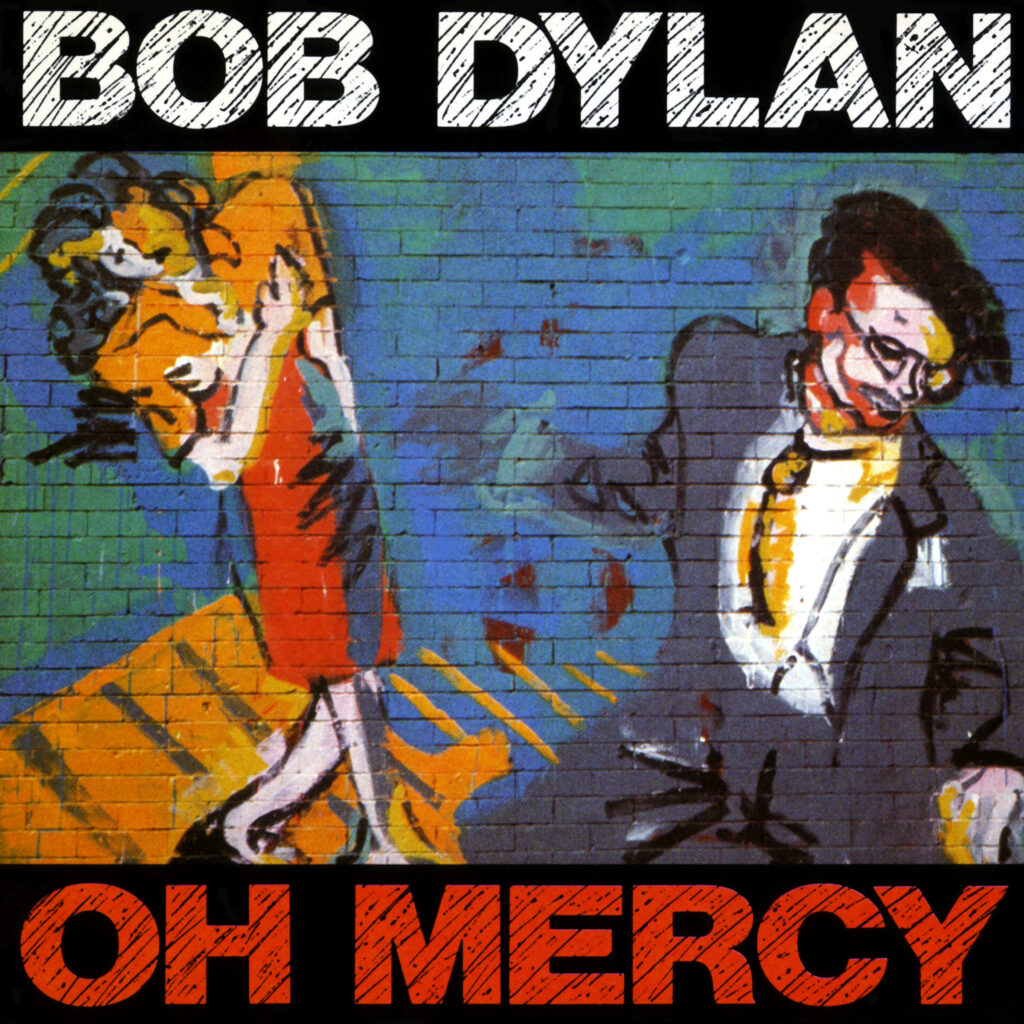
Oh Mercy
1989
(8.9)
14
Wait, what?!? Oh Mercy came between which two albums?!? Yes, Bob Dylan’s second great comeback may have been more publicly hailed as such had he managed to sustain it for more than one album. Following the dismal post-Infidels trilogy, Oh Mercy was an unexpected breath of fresh air.
And while much of the credit for this one belongs to Daniel Lanois — whose production here is stellar, and creates an atmosphere unlike any other record in Dylan’s discography — it would matter little if Dylan hadn’t brought a great set of songs to the table. It’s not unreasonable to suggest that the worst song here is better than literally any song on his previous three records, but even making such comparisons feels unfair to Oh Mercy.
Simply put, this is an outstanding record. And, given where it came in sequence, perhaps the most miraculous one in Dylan’s catalog.
One for the playlist: It’s probably safe to say that none of these tracks have really entered into widespread recognition, which leaves plenty of worthy choices. How about we go with “Most of the Time” — which arguably does the best job of showcasing what Daniel Lanois provides here — but let me register my disappointment at not being able to include “Shooting Star” as well.
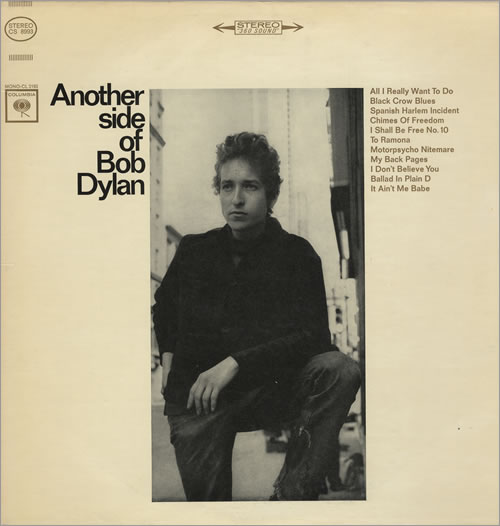
Another Side of Bob Dylan
1964
(9.2)
13
Bob Dylan’s fourth album promises “another side” in its title, and that’s precisely what it delivers. Largely backing off from the protest songs that had defined his previous two records, Another Side finds Dylan stretching the range of his writing as he approached his mid-sixties peak.
What immediately stands out about Another Side is its more introspective material: displayed clearly in the album’s two most iconic tracks, “My Back Pages” and “It Ain’t Me Babe.” It’s not that Dylan hadn’t operated in this mode before, but with no protest-minded headliners, these songs leave a particularly sizable impact. But, contrary to the shorthand reading of Another Side, there is social commentary to be found here. It’s just that it tends to be lurking along the margins of these songs; at least outside of the masterful “Chimes of Freedom.”
Of course, the folk establishment was quick to criticize Dylan for subverting their expectations. And, as only Bob Dylan could, he’d push even further with his next record.
One for the playlist: A fan favorite that was a long-time fixture in Dylan’s live sets, “I Don’t Believe You” is perhaps pop music’s best representation of the concept of ‘ghosting.’ It’s a good showcase for the more playful ‘side’ of Dylan found on this album.
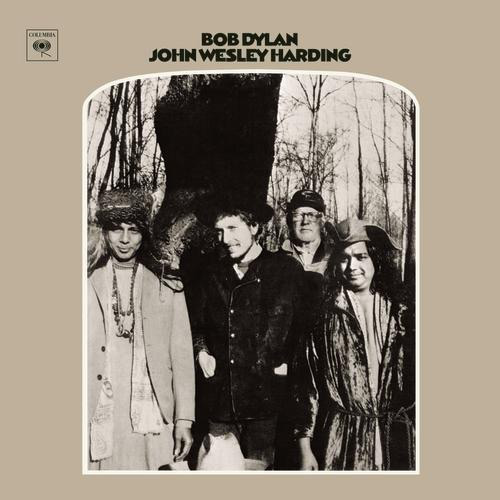
John Wesley Harding
1967
(9.3)
12
While it’s fashionable — and not entirely unfair — to refer to 1967’s John Wesley Harding as something of a retreat from the heady days of Bob Dylan’s mid-sixties “voice of a generation” peak, to do so runs the risk of overlooking just how rich this record is.
While nowhere near as dense or verbose as the three albums that preceded it, Harding is a sneakily cryptic set. The music’s close connection to Dylan’s folk/country roots — not to mention the religious allegories than run throughout — seem to suggest that these twelve songs are vehicles for some sort of moralistic messaging. However, to quote one of its tracks, even with closer inspection, “nothing is revealed.”
And even the music — while deliberately stripped-down from the garage rock of Dylan’s 1965-66 albums — is way more impressive than initial listens are likely to suggest. Pared down to just Dylan and a crack rhythm section (Charlie McCoy on bass and Kenny Buttrey on drums), these songs are surprisingly varied, atmospheric, and even funky on occasion.
So, underestimate this one at your own peril. It’s one of Dylan’s most rewarding records.
One for the playlist: There are several contenders here, as only “All Along the Watchtower” has worked its way into widespread recognition. Among these, “I Dreamed I Saw St. Augustine” is a particularly vivid ambassador for one of Dylan’s most consistently moving albums.
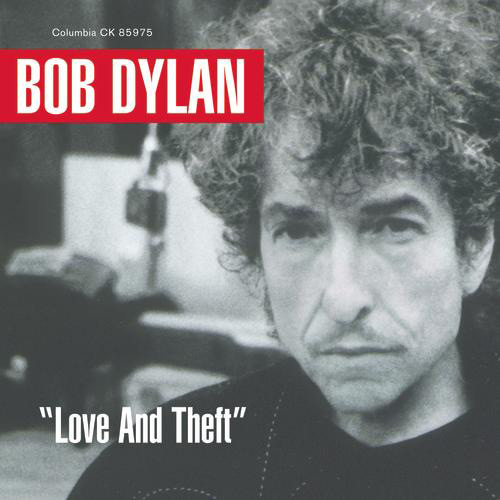
Love and Theft
2001
(9.3)
11
Containing perhaps the deepest allusions — both lyrically and instrumentally — to the deep well of American music found in any Bob Dylan record, Love and Theft is an absolute late-career gem. Arriving, as it did, on one of the darkest days in the nation’s history, the album became an unintentional ode to American artistic spirit, from one of its greatest masters.
I bought Love and Theft on that day, and it has remained a treasured record for me ever since. As the first new Dylan album that I anticipated as a fan, it already would’ve been a big deal, but the fact that Love and Theft documented those difficult post-9/11 days gave it an almost impossibly rich resonance; say nothing of the fact that it was an equal follow-up to Dylan’s most improbable comeback yet.
So admittedly, personal feelings certainly help to push this one just outside of my own Dylan Top 10, but I’ve got a strong feeling that it belongs there anyway.
One for the playlist: Love and Theft was released after any of the qualifying compilations, but I’ll assume that “Mississippi” would’ve been a shoe-in for any hypothetical Greatest Hits Volume 4. This is one of those records that I could choose pretty much any track from, but I’ll go with “Po’ Boy,” as its humor provided a much-welcome moment of levity in my earliest listens to this album.
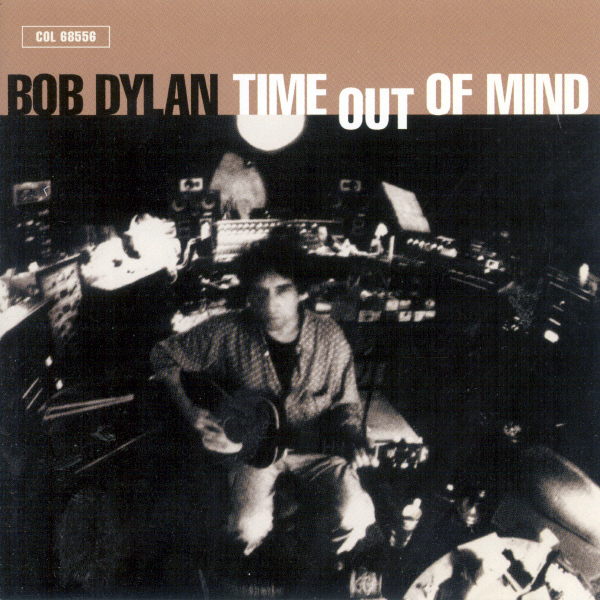
Time Out of Mind
1997
(9.4)
10
While it’s become the standard talking point regarding Time Out of Mind, the “comeback” narrative surrounding this album is real. Keep in mind that — aside from the legitimately excellent Oh Mercy — Bob Dylan hadn’t released a truly great album in over twenty years. In fact, following the dead-on-arrival Under the Red Sky, Dylan had spent the nineties recording ancient folk songs in his garage.
But Time Out of Mind was a full-effort affair. With Daniel Lanois back at the helm, as he had been for Oh Mercy, Dylan’s strongest set of songs in decades was given an atmospheric sheen that was both ethereal and haunting. That spectral quality both added to and alleviated the enormous weight of Dylan’s lyrics — which felt more personal, and vital, than on any album since Blood on the Tracks. And while he had spent the last two decades releasing albums that critics noted ‘always had at least one good song,’ every track on Time Out of Mind feels crucial to the project.
Admittedly, it was the hype surrounding Time Out of Mind that finally made me pay real attention to Dylan. I knew the hits growing up, but as an eighteen-year-old in 1997, Dylan hadn’t yet seemed to be a necessary part of my vocabulary. And when I got Time Out of Mind, I ultimately appreciated it more than I enjoyed it. In that moment, its real value was in piquing my curiosity enough to go back and discover his earlier records.
But twenty-five years later, this album — which was always great — resonates with me much more. Sure, knowledge of what came before and after it deepens the appreciation of this record, but time makes it easier to understand.
One for the playlist: The masterpiece here is “Not Dark Yet” — and if it isn’t already recognized as one of the very best songs of Dylan’s career, it should be. Beyond that, “Love Sick” does the best job of capturing the otherworldly vibe of Lanois’ production, as Dylan sounds like he’s beaming his vocals in from some kind of tortured afterlife.
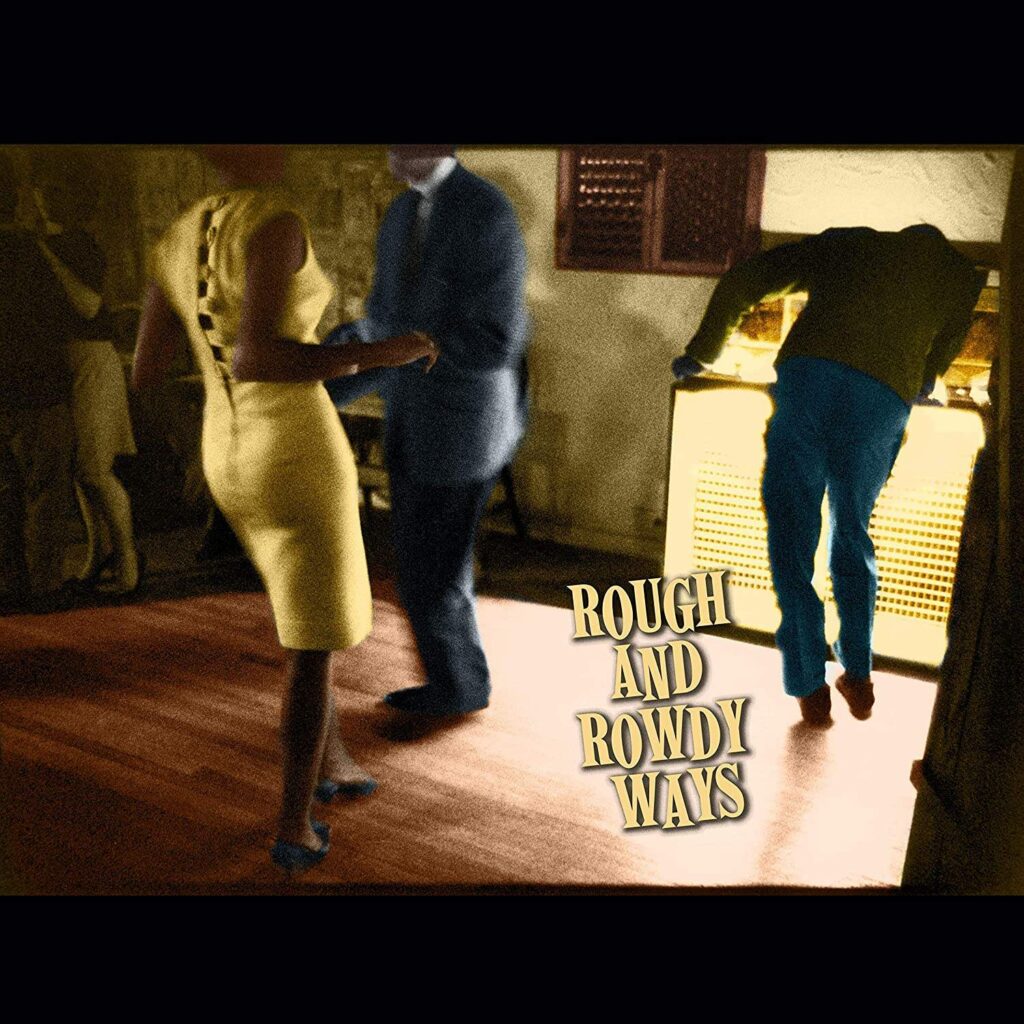
Rough and Rowdy Ways
2020
(9.4)
9
Musical Life Lesson #1: Never count Bob Dylan out.
Even if he spends the first half of a decade making pleasant-but-minor albums, he still has the capacity to deliver a fucking gut punch.
Even if he splits almost the entire next decade between heavy-handed, fire-and-brimstone religiosity and gutlessly meandering yacht-adjacent-soft rock, he still has the ability to craft a goosebump-inducing, atmospheric classic.
Even if he spends the next several years recording old folk tunes in his home studio, he still has it within himself to pen a haunting meditation on mortality.
And even when he appears to be content as an aged multi-millionaire, crooning old ballads in a voice soaked in (literally) his own bourbon, he still can leave you stunned with original tomes that are somehow referential, relevant, and prescient.
Bob Dylan is not like the rest of us.
One for the playlist: One of the loveliest songs in Dylan’s entire catalog, “I’ve Made Up My Mind to Give Myself to You” is a gorgeous torch ballad, complete with what may be the best backing vocals to ever appear in a Dylan track.
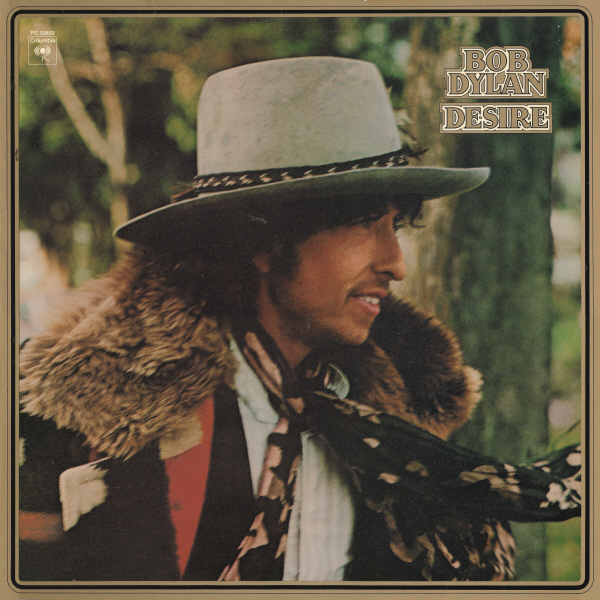
Desire
1976
(9.4)
8
Arguably the most musically-varied album in Bob Dylan’s catalog, Desire was a product of the whirlwind Rolling Thunder Revue era, and a successful follow-up to the comeback displayed on 1975’s Blood on the Tracks.
Largely comprised of songs co-written with Jacques Levy, the lyrics of Desire reflect the musical variety of the album: the fiery protest of “Hurricane”; a poignant reflection on Dylan’s crumbling marriage; a somewhat-awkward, misty-eyed tribute to a dead mob boss; multiple expressive travelogues. Its range is impressive in a way that Dylan albums rarely are.
And it’s also a dark horse favorite in his discography. I’ve encountered many folks who consider Desire their favorite Dylan album; and while I don’t entirely agree with that, it may in fact be the most fascinating one.
One for the playlist: One of those aforementioned travelogues, “Isis” has long been a fan favorite. It would reach its idealized form in the scintillating live versions from the Rolling Thunder Revue, but the studio take is plenty damned great too.
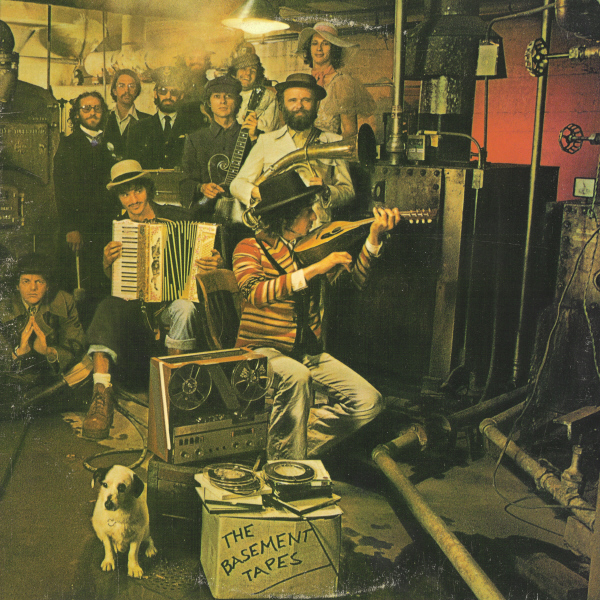
The Basement Tapes
1975
(9.5)
7
It’s worth noting that many great works of art are more than a sum of their parts. These are often defined not only by their collective power, but by context, circumstance, and what exists between the lines. With its complicated and confused history, Bob Dylan and The Band’s Basement Tapes are one such work.
Recorded after Dylan and The Band’s tumultuous 1966 tour, and Dylan’s subsequent motorcycle accident, The Basement Tapes would only briefly languish in obscurity before essentially, single-handedly, creating the pop music bootleg industry. While its songs would find their way to the public via counterfeit albums and covers performed by other groups (including The Band themselves), the entire scope of the project remained the stuff of legend.
Well, at least until 1975, when Dylan finally gave the green light to an official release of the material — largely as a way to counteract bootleggers. And while what the public ultimately got was compromised — several key songs were missing, and the original sessions were augmented with both overdubs and entirely new Dylan-less recordings by The Band — what was issued was little short of a revelation.
Not only would these songs preview the direction that Dylan would take during his so-called “wilderness” era, they were also prescient for pop music as a whole, as they seemed to anticipate the “return to roots” that would define the nascent Americana sound in the coming years.
And, taken collectively, these twenty-four tracks create a fascinating portrait of what Greil Marcus would dub “old weird America.” Marcus himself connected The Basement Tapes to nothing less than Harry Smith’s monumental Anthology of American Folk Music; and in their own way, these songs represent Dylan and The Band’s own take on an alternate Great American Songbook.
One for the playlist: Aside from the ones that would become legitimate hits for others, and/or appear on 1971’s Greatest Hits Volume II, my favorite track here is “Going to Acapulco.” It perfectly threads the line between loose and poignant, and helps to establish The Basement Tapes‘ immaculate vibes early in the track listing.
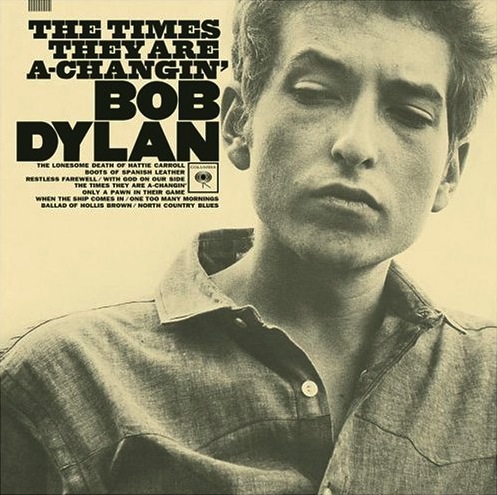
The Times They Are A-Changin’
1964
(9.6)
6
Aside from its monumental title track, The Times They Are A-Changin’ has long stood in the shadow of its vaunted predecessor, The Freewheelin’ Bob Dylan. And while it’s bound to pale in comparison to Dylan’s first masterpiece, Times shouldn’t be as polarizing at it seems to be.
There are more specifics here than in any of Dylan’s material to date: Medgar Evers, Hattie Carroll, the litany of historical conflicts referred to in “With God on Our Side.” For some listeners, this makes these tracks come off as too direct, or even heavy-handed. However, they provide an impactful variant to the intentionally-generalized nature of the earlier “Blowin’ in the Wind” or “A Hard Rain’s A-Gonna Fall” – and something closer to the “singing journalist” styling of Dylan’s contemporary, Phil Ochs.
But the nuance that had made Freewheelin’ such a masterful record is still fully on display here. “Only a Pawn in Their Game” creates empathy – but not too much – for its villain with context, while “The Lonesome Death of Hattie Carroll” does the opposite. “Ballad of Hollis Brown” crafts something genuinely unsettling with a minimalist’s touch. The title track still resonates as an anthem of youth empowerment, largely because of its near-perfect balance of the specific with the general.
And sure, in sum total Freewheelin’ still provides a bit more – and it came first – but this is still a stunning set of songs.
One for the playlist: It would be a severe oversight to not include any of Dylan’s overt protest material, and among the lesser-known examples, “The Lonesome Death of Hattie Carroll” is one of the most deeply affecting. This is one of the cases of Dylan’s art gaining poignancy from its “ripped from the headlines” nature, and even when you know how the story ends, it still lands like a punch to the gut, every time.
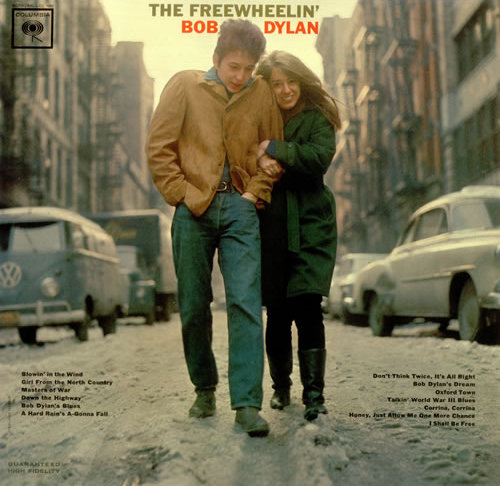
The Freewheelin’ Bob Dylan
1963
(10.0)
5
Bob Dylan’s second LP is a masterclass in songwriting, and a far more varied set than most would probably expect. Across these thirteen tracks, Dylan tackles injustice, spits venom, cracks wise, wistfully remembers a youth not-far-passed, pays homage to the acoustic blues, writes a pair of the greatest jilted love songs you’ll ever hear, and an even better pair of perpetually-relevant ruminations on “all of the above.”
Barely twenty-one at the time in which most of these tracks were written and recorded, the growth displayed between this and Dylan’s self-titled debut is difficult to fathom. Really, he went from being just one of many on the Greenwich Village scene to crafting the greatest straight-folk album of all-time in just over a year.
His Whitman-quoting 2020 song, “I Contain Multitudes,” sounded less like a boast than the truth of a well-traveled artist: one who had seen and done it all over the course of nearly eighty years on earth. It was stately. Poignant. Wizened. But here as well, barely out of his teens, Bob Dylan already contained multitudes.
If he’d simply stopped here, he would’ve already been a legend.
One for the playlist: A beloved fan favorite, “Girl From the North Country” stands among Dylan’s most tender and wistful ballads. There’s a profound melancholy that runs throughout much of his early material, and here, it manifests in a song that is both beautiful and heartbreaking.
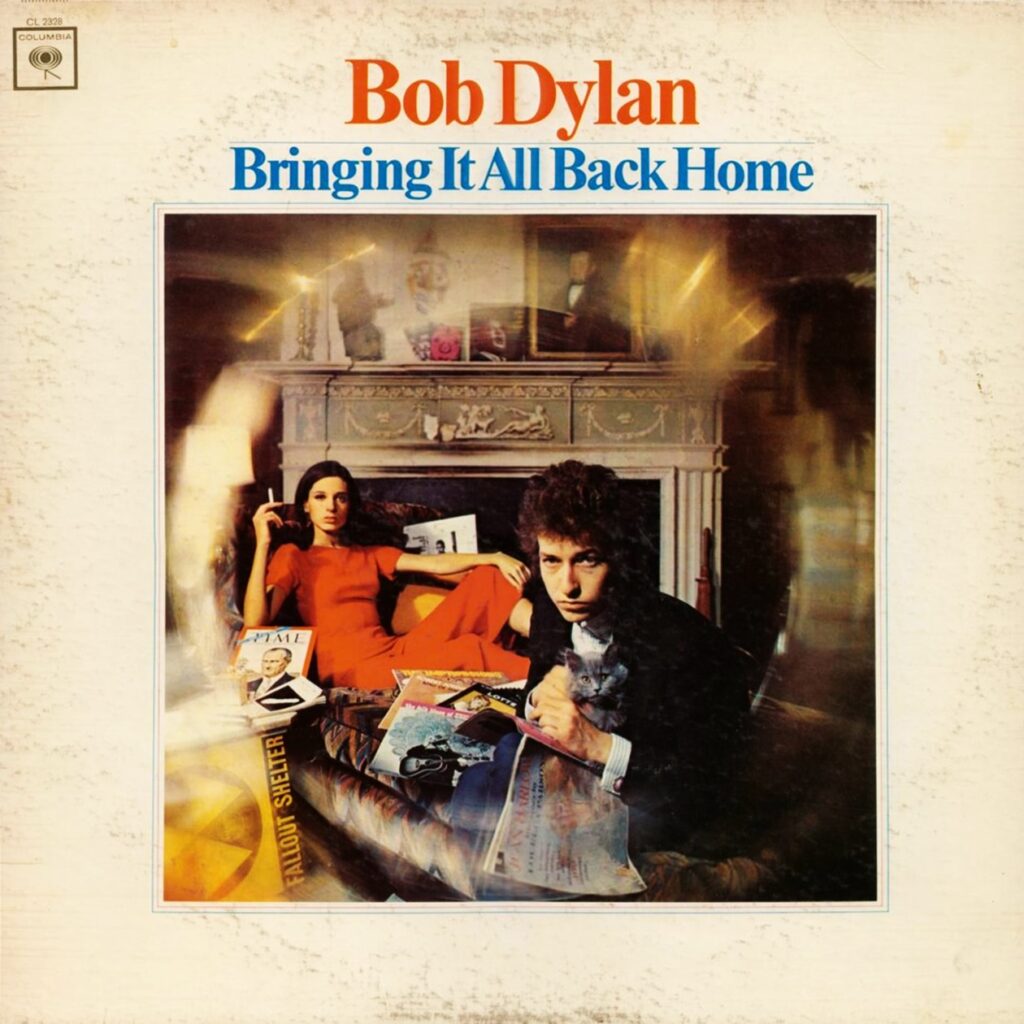
Bringing It All Back Home
1965
(10.0)
4
In 1965, Bob Dylan graduated from phenomenal to superhuman, releasing two of the best albums in the history of popular music. The ‘lesser’ of these is the stunning and groundbreaking Bringing It All Back Home.
Famously divided between ‘electric’ and ‘acoustic’ sides – though that’s not 100% accurate – Bringing It All Back Home represented a breaking point for the staunch folk purists, who insisted that Dylan was “selling out” in catering to the sounds of contemporary pop music. But nowhere in the textbook for pop success does it mention windingly surreal tone poems that stretch beyond the five-minute mark, junkyard fuzz rap, or blunt critiques of consumerism and political complacency.
If this was Dylan going pop, he was doing it entirely on his own terms, and by blazing trails that had never been walked before. It’s smart, sarcastic, and occasionally sweet. It takes the most basic elements of pop – essentially a beat and a catchy melody – and turns it into something that functions on a much higher plane. It’s no small coincidence that even the mighty Beatles would up their game in the wake of Bringing It All Back Home, for it was here that Dylan truly raised the bar.
One for the playlist: While I think that — among the eligibles — “It’s Alright, Ma (I’m Only Bleeding)” is a better song, I’m gonna go with “Love Minus Zero / No Limit”: a track that sounds like a love song on its surface – which probably means that it isn’t one – and, consequently, makes all previous pop love songs sounds like little more than child’s play.
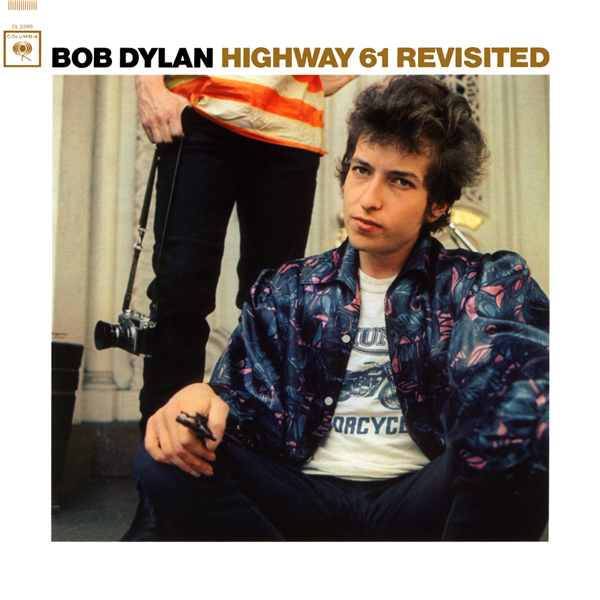
Highway 61 Revisited
1965
(10.0)
3
The fight for the top spot in Bob Dylan’s catalog is a three-contender race, and in my earliest encounters with Dylan, Highway 61 Revisited was the runaway favorite.
Something about this one just spoke to me as a late-teen: specifically in my first semester of college, when I first heard Highway 61. As a first-in-family college student, I carried something of a chip on my shoulder, and the “Mr. Joneses” and “Miss Lonelys” that Dylan directed his scorn towards could’ve very well been the folks sitting next to me in my morning classes: the ones that I attended before heading off to a full-time job in the afternoon. As a working class kid, I felt like a square peg in a round hole, and every test score, course grade, and accolade that I earned was in spite of the (perceived) children of privilege that surrounded me.
And Highway 61 captured that attitude perfectly. I’ve remarked elsewhere that the album is “punk as fuck”; and while that may or may not be true, it sure as fuck was more punk than Millencolin, or whatever the so-called punks of the day were listening to.
Anyway, I’ve never grown off of this album — nor entirely rid myself of the chip on my shoulder, for what it’s worth. It’s still perfect, even if other Dylan albums resonate just a little more for me today.
One for the playlist: You can never get enough of that Dylan garage rock sound — and we don’t really have any of it on here yet — so I’m gonna go with “Tombstone Blues.” It’s a manic, revved-up, punk blues highlight on an album with nothing but highlights.
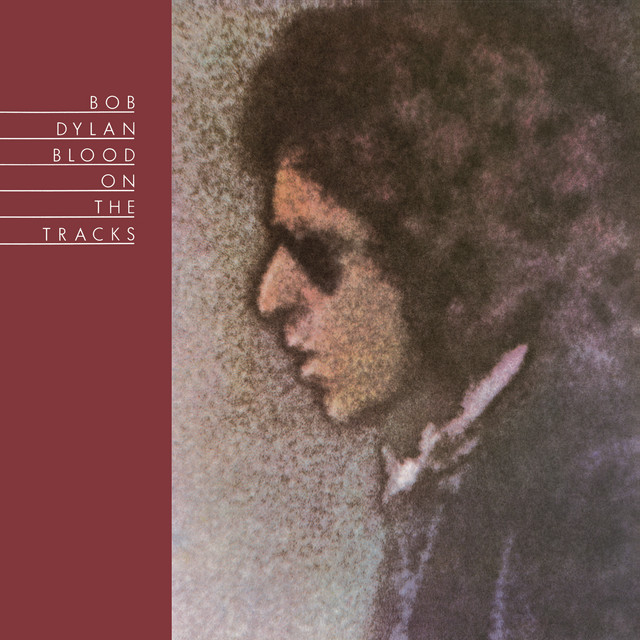
Blood on the Tracks
1975
(10.0)
2
Okay, so now all of you Blood on the Tracks lovers know what album isn’t gonna top this list, but before you ready your aim, know that I will probably disagree with myself by the next time I listen to Bob Dylan’s first — and greatest — “comeback” record. In fact, I spent much of the time prepping this article vacillating between these last two, and even toyed with the idea of labeling them ‘1A’ and ‘1B.’
But that’s a cop out, so I have to commit to just one and stick with it. And with this piece rapidly approaching the 10,000-word mark, I’m gonna keep it brief. Blood on the Tracks is a masterpiece. Perfect even. It is the archetypal “confessional” singer-songwriter album, and for good reason. Time and again, Dylan has denied that this is an autobiographical account of the dissolution of his marriage, but it’s impossible not to hear it in these ten songs. His pain is palpable. The ache is genuine. There is blood on these tracks.
And while it runs the risk of being seen as self-indulgent, or even voyeuristic, Dylan approaches this material with a master’s touch — and the aforementioned plausible deniability. Blood on the Tracks works so well because its sentiments — whether rooted in biography or not — are so damned relatable that they’re near-universal. And in the end, that’s what makes this record as good as anything in Dylan’s — or anybody’s — catalog. On the other albums near the top of this list, Dylan sounds almost superhuman. But on Blood on the Tracks, he sounds like one of us.
One for the playlist: Really? Just one? I mean, the “man named Gray” verse alone from “Idiot Wind” makes it almost impossible to pass over. “If You See Her, Say Hello” is devastating. “You’re a Big Girl Now” is the song that sold me on Dylan. Still, even those classics fall ever so slightly behind “Simple Twist of Fate”: a song whose imagery is nothing short of stunning.
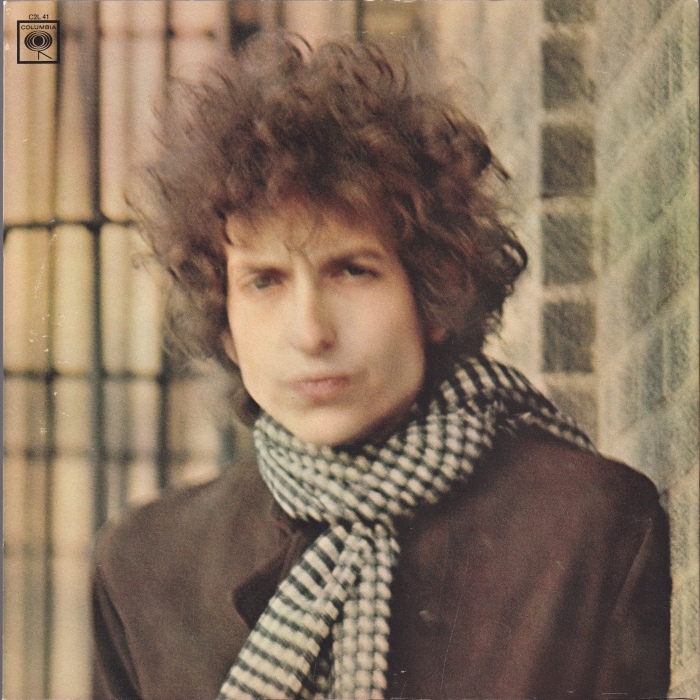
Blonde on Blonde
1966
(10.0)
1
So, why Blonde on Blonde, over an album that I just described as ‘perfect’? I think it comes down to range. I mean sure, there’s a lot of emotional range to Blood on the Tracks, but even in its most vitriolic or whimsical moments, it’s coming from a place of heartbreak. Blonde on Blonde has some of that vulnerability as well, but it also has swagger. Undeniable swagger.
And Blood on the Tracks is much more focused (some might say limited) in its instrumentation. In contrast, Blonde on Blonde is all over the place. It’s playful, rollicking, romantic, ethereal, exuberant. It drips with a sound that Dylan himself described as “thin wild mercury.”
Blood on the Tracks is tight: ten songs that fit comfortably on a single slab of vinyl. Blonde on Blonde is sprawling. Its fourteen tracks necessitated a second disc, which would make it the first ever double-album released by a major rock artist.
And perhaps most importantly, for me at least, Blonde on Blonde was released in that musical hotbed that was 1966. For many years, it was actually believed that it came out on the same day as Pet Sounds (research now points to late-June instead of mid-May). It arrived a couple of months before Revolver. Those three records alone suggested infinite possibilities for the future of pop music. Pet Sounds expanded a self-contained rock group to a place of startling artistic ambition. Revolver was the past, present, and future of pop, presented in fourteen impossibly varied songs.
And Blonde on Blonde reinforced the truth that language could create something as evocative and surreal as instrumentation and production. Sure, Dylan had already shown that before, but even in the most vivid moments of Highway 61 Revisited or Bringing It All Back Home, he hadn’t yet created anything as effervescent as “I Want You,” as shambolic as “Most Likely You Go Your Way and I’ll Go Mine,” or as lovely as “Just Like a Woman.”
On an earlier record, he had promised — and delivered — Another Side of Bob Dylan. For all intents and purposes, Blonde on Blonde could have just as easily been titled Every Side of Bob Dylan.
One for the playlist: Although I could justify picking any of the eligibles, it comes down to a tough choice between “4th Time Around” and “Visions of Johanna.” Ahhh, who am I kidding? As much as I love the former, “Visions of Johanna” may be the greatest set of lyrics ever written.



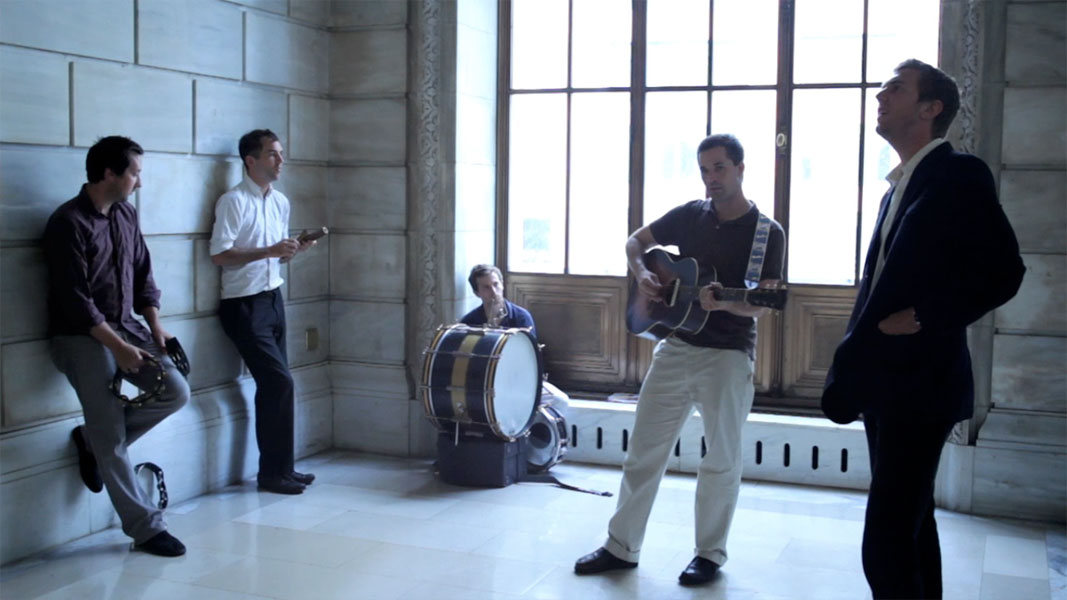

Sadly predictable list, but it’s hard to avoid that with ranking albums that have been ranked twelve billion times before. Bold move putting Self Portrait in your top 20, although not as bold as it would have been before the Another Self Portrait Bootleg Series came out and provoked revisionist love for what is actually not a good album. I appreciate your self-declared willingness to keep giving the 80’s stuff a chance, but it’s hard to believe when it’s all just uniformly ranked at the bottom, followed by the Great American Songbook albums and the Gospel albums. But you like what you like, and truthfully, your rankings would probably be very similar to the average music fan’s, which is only fair.
Kickass playlist though. Fantastic choices throughout.